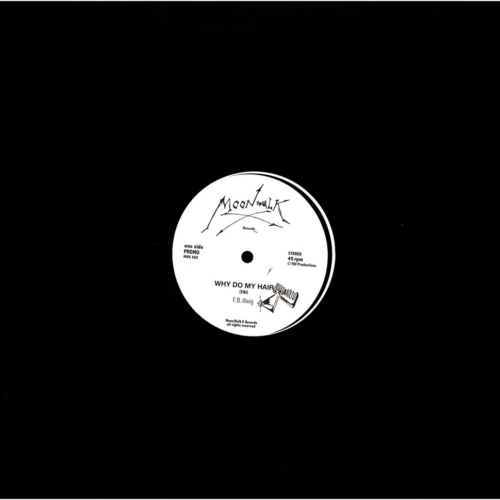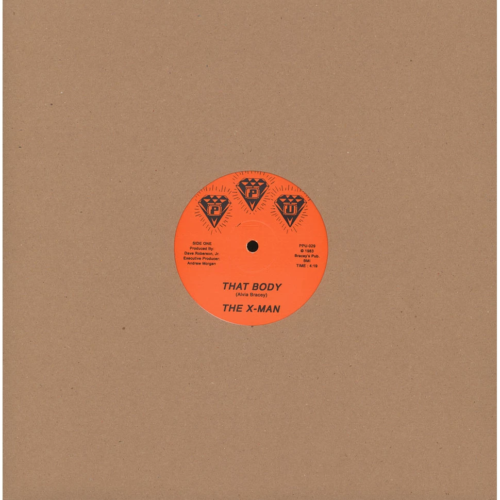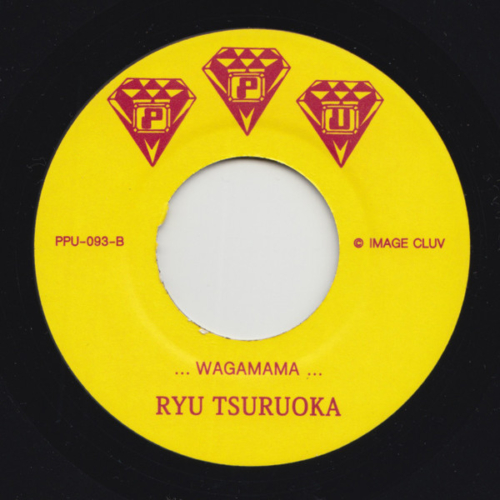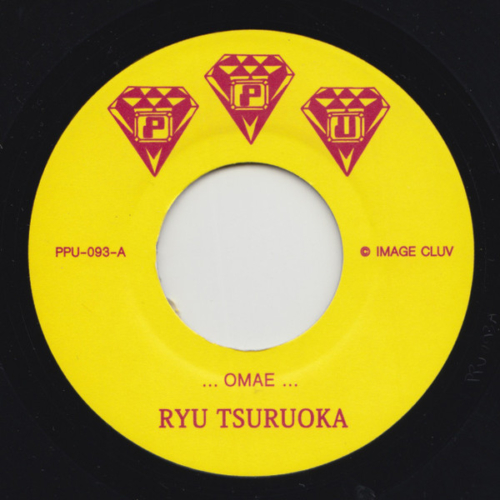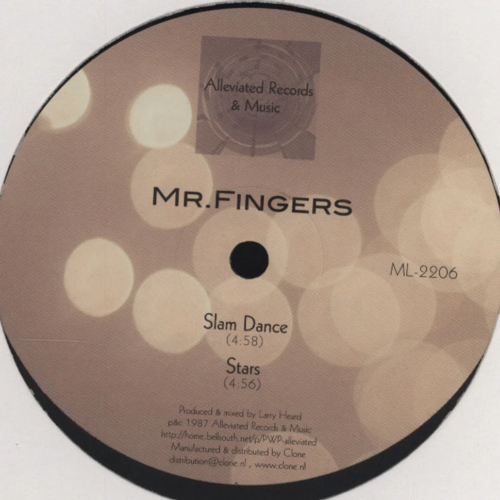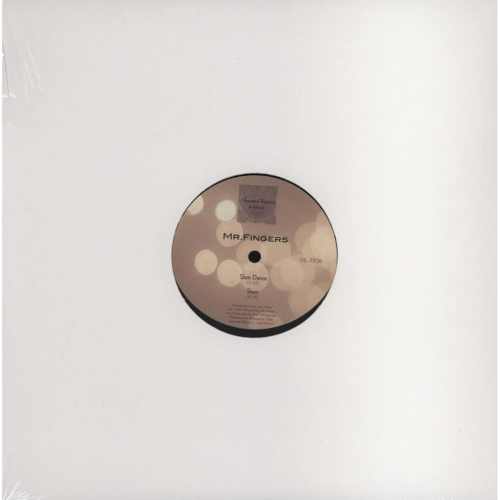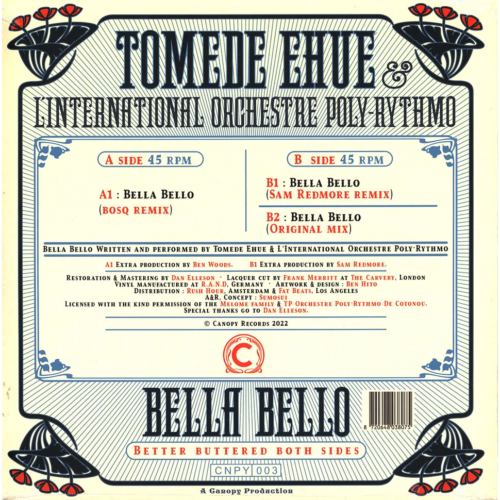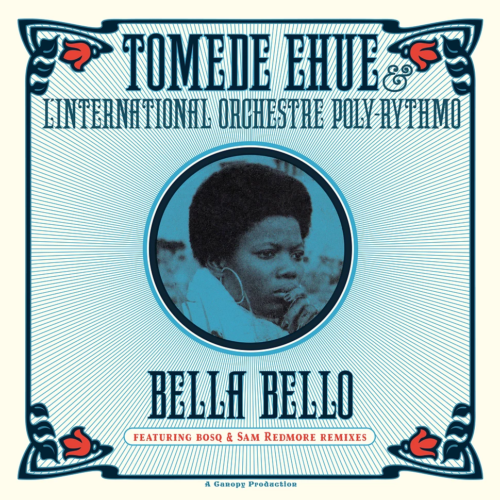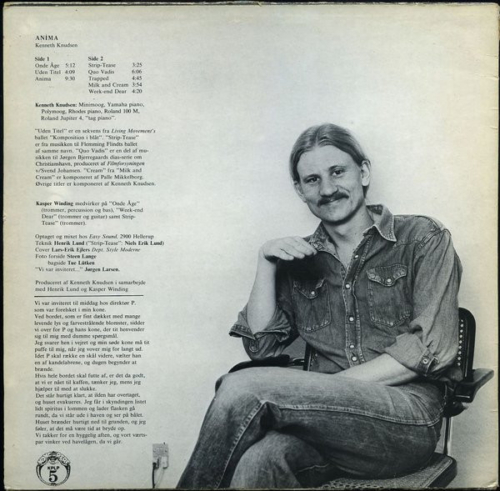-
Ausverkauft
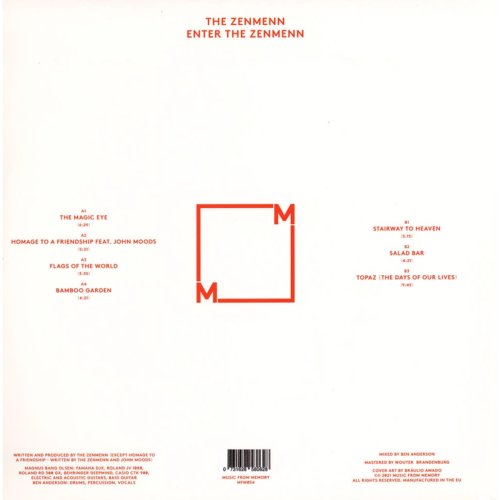
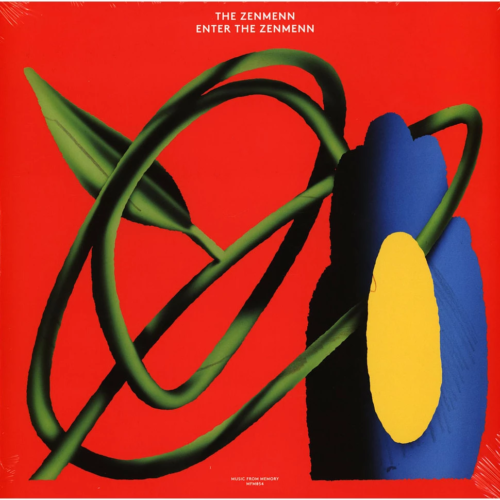 Returning with another debut album for 2021, Music From Memory are delighted to introduce a new band, The Zenmenn, with their first ever release ‘Enter The Zenmenn’. Whilst little about the band is made known, their work is described by writer Winton Rousseauas an “experiment in harmonic convergence emerging from a deep respect for cosmic symmetry and a resistance to the prevailing Zeitgeist.” ‘Enter The Zenmenn’ sounds as old as it sounds new, as organic as it is electric, as harmonic as it is rhythmic, and the album’s fusion of different palettes, colours, tempos, instruments and sources offer a harmonious balance and unity that already feels like the perfect soundtrack to a better world. In a time of what they see as spiritual neglect, it offers a “human kind of stillness” through the “dualistic fusions of complexity and simplicity, mystery and clarity and East and West”. Mfm054 will be released in LP and digital format, comes with artwork by Bráulio Amado, and is expected to be out on April 12th 2021.
Returning with another debut album for 2021, Music From Memory are delighted to introduce a new band, The Zenmenn, with their first ever release ‘Enter The Zenmenn’. Whilst little about the band is made known, their work is described by writer Winton Rousseauas an “experiment in harmonic convergence emerging from a deep respect for cosmic symmetry and a resistance to the prevailing Zeitgeist.” ‘Enter The Zenmenn’ sounds as old as it sounds new, as organic as it is electric, as harmonic as it is rhythmic, and the album’s fusion of different palettes, colours, tempos, instruments and sources offer a harmonious balance and unity that already feels like the perfect soundtrack to a better world. In a time of what they see as spiritual neglect, it offers a “human kind of stillness” through the “dualistic fusions of complexity and simplicity, mystery and clarity and East and West”. Mfm054 will be released in LP and digital format, comes with artwork by Bráulio Amado, and is expected to be out on April 12th 2021. -
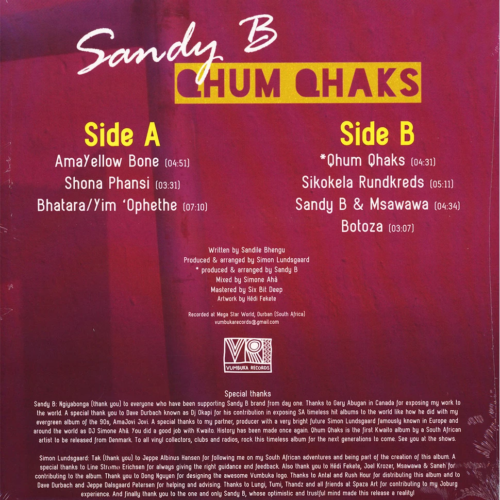
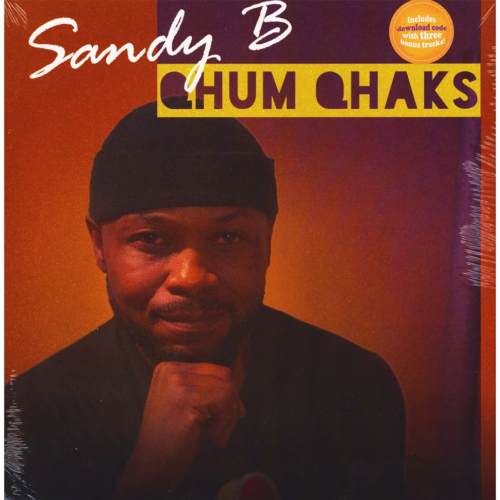 New material by Sandy B! South African Kwaito inspired music on this one....check out "Qhum Qhaks" which is a favorite here... Sandile Bhengu comes from Durban, South Africa, where he in the middle of the 90’s released his debut kwaito album Amajovi Jovi under the moniker Sandy B. During the following decades he would move actively within the local music scene and touch a variety of genres including afro-pop, deep house, R’n’B and Soul. In the mid 2010’s around 20 years since its release crate diggers and DJ’s across Europe and North America started dropping tracks from Amajovi Jovi. In late 2017 the album was reissued on Canadian label, Invisible City Editions giving a new lease of life to a forgotten classic and giving this once little known artist an international reputation. Following the successful re-issue of the 1995-album Sandy B returns to the forefront of music with original material 24 years later in the form of Qhum Qhaks. Qhum Qhaks comes from a close collaboration between Sandy and Danish DJ and collector Simon Lundsgaard a.k.a Simone Ahà. All songs were recorded in Sandy’s home studio to stick close to the ethics and production techniques of the 1995 classic. The material that emerged from this experimental process between the two of them captures the spirit of old school kwaito from the 90’s. Vumbuka Records was founded by Sandile Bhengu & Simon Lundsgaard in 2019 especially for the release of Qhum Qhaks. The vinyl release of Qhum Qhaks contains seven original tracks and a download code with three extra bonus tracks.
New material by Sandy B! South African Kwaito inspired music on this one....check out "Qhum Qhaks" which is a favorite here... Sandile Bhengu comes from Durban, South Africa, where he in the middle of the 90’s released his debut kwaito album Amajovi Jovi under the moniker Sandy B. During the following decades he would move actively within the local music scene and touch a variety of genres including afro-pop, deep house, R’n’B and Soul. In the mid 2010’s around 20 years since its release crate diggers and DJ’s across Europe and North America started dropping tracks from Amajovi Jovi. In late 2017 the album was reissued on Canadian label, Invisible City Editions giving a new lease of life to a forgotten classic and giving this once little known artist an international reputation. Following the successful re-issue of the 1995-album Sandy B returns to the forefront of music with original material 24 years later in the form of Qhum Qhaks. Qhum Qhaks comes from a close collaboration between Sandy and Danish DJ and collector Simon Lundsgaard a.k.a Simone Ahà. All songs were recorded in Sandy’s home studio to stick close to the ethics and production techniques of the 1995 classic. The material that emerged from this experimental process between the two of them captures the spirit of old school kwaito from the 90’s. Vumbuka Records was founded by Sandile Bhengu & Simon Lundsgaard in 2019 especially for the release of Qhum Qhaks. The vinyl release of Qhum Qhaks contains seven original tracks and a download code with three extra bonus tracks. -
Ausverkauft
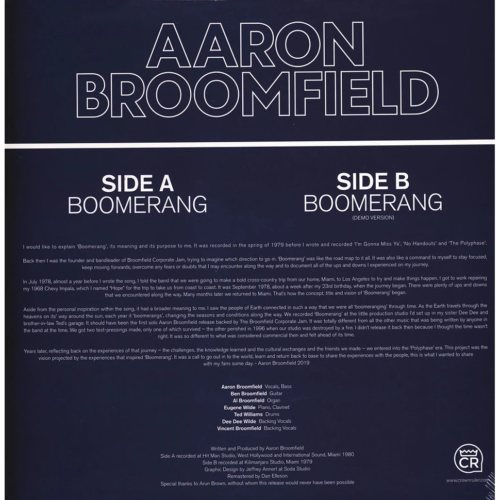
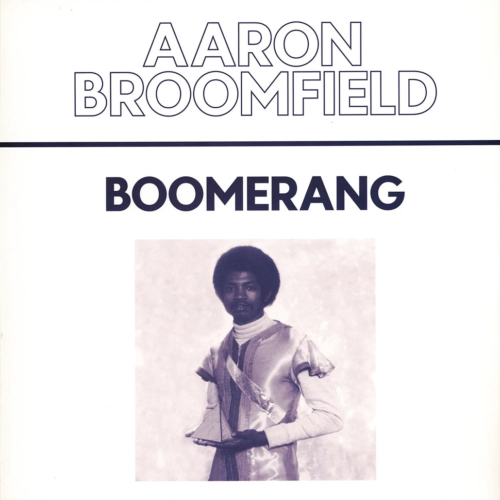 Crown Ruler Records returns with a slab of unreleased disco-funk from Miami musician, Aaron Broomfield. HEAVY tune, in two mixes.. TIP. “Boomerang” was first recorded in 1979, when the Broomfield Corporate Jam leader was attempting to plot a solo career. It was the first cut Aaron Broomfield recorded under his own name – Initially, at the family band’s home studio, Kilimanjaro, and later at professional studios in L.A and Miami – but it was never released. “I always wanted to be able to share ‘Boomerang’ with my fans some day – I didn’t release it back then because I thought the time wasn’t right,” Broomfield explains. “It was so different to what was considered commercial then and felt ahead of its time.” Before deciding against releasing it, Broomfield had two test pressings made. It was the accidental discovery of the one remaining record by digger Arun Brown (the other perished when Broomfield’s Kilimanjaro studio was damaged by a fire in 1996) that set in motion the chain of events that finally led to its release. The jacket boasts a written essay by Broomfield himself, telling the remarkable story behind the song. The wax features the two versions of Boomerang, of which both were meticulously restored and re-mastered by celebrated Australian sound engineer, Dan Elleson. Head to side A for the “test press” version, a cosmic, starry-eyed chunk of elastic Miami disco-funk where the Broomfield family’s killer instrumentation – all rubbery bass, deep space synths and crunchy Clavinet motifs – arcs around the sound space like a boomerang in flight. The vocal arrangement, in which Aaron Broomfield’s conscious lyrics come through loud and clear, brings it home. On the flipside, you’ll hear how dynamic the band was through the “Demo Version” - a relaxed, loose and spacey groover that sounds as ahead of its time in 2018 as it would have when it was recorded in 1979.
Crown Ruler Records returns with a slab of unreleased disco-funk from Miami musician, Aaron Broomfield. HEAVY tune, in two mixes.. TIP. “Boomerang” was first recorded in 1979, when the Broomfield Corporate Jam leader was attempting to plot a solo career. It was the first cut Aaron Broomfield recorded under his own name – Initially, at the family band’s home studio, Kilimanjaro, and later at professional studios in L.A and Miami – but it was never released. “I always wanted to be able to share ‘Boomerang’ with my fans some day – I didn’t release it back then because I thought the time wasn’t right,” Broomfield explains. “It was so different to what was considered commercial then and felt ahead of its time.” Before deciding against releasing it, Broomfield had two test pressings made. It was the accidental discovery of the one remaining record by digger Arun Brown (the other perished when Broomfield’s Kilimanjaro studio was damaged by a fire in 1996) that set in motion the chain of events that finally led to its release. The jacket boasts a written essay by Broomfield himself, telling the remarkable story behind the song. The wax features the two versions of Boomerang, of which both were meticulously restored and re-mastered by celebrated Australian sound engineer, Dan Elleson. Head to side A for the “test press” version, a cosmic, starry-eyed chunk of elastic Miami disco-funk where the Broomfield family’s killer instrumentation – all rubbery bass, deep space synths and crunchy Clavinet motifs – arcs around the sound space like a boomerang in flight. The vocal arrangement, in which Aaron Broomfield’s conscious lyrics come through loud and clear, brings it home. On the flipside, you’ll hear how dynamic the band was through the “Demo Version” - a relaxed, loose and spacey groover that sounds as ahead of its time in 2018 as it would have when it was recorded in 1979. -
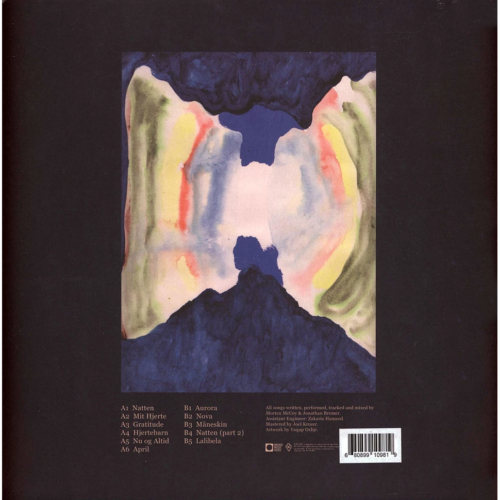
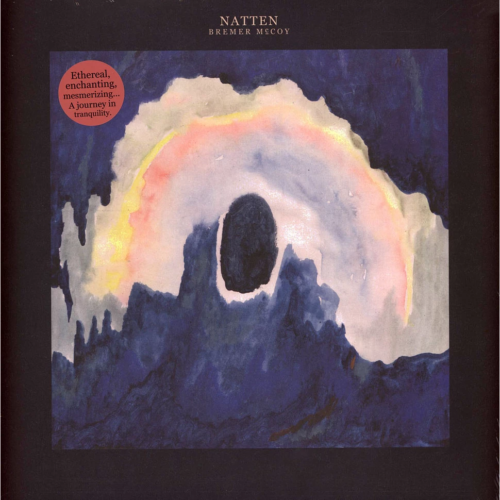 What were they up to? Nobody could tell—not even them. Bremer/McCoy recorded straight to tape so that they had as little time as possible to think about it. They just laid it down. They couldn’t really explain it. “When it works for me,” says pianist Morten McCoy, “it’s pure meditation, pure prayer. Pure gratitude for simply being, without all kinds of jibber-jabber filling my thoughts.” A sentiment that tells you everything about the feeling and nothing about the sound. McCoy and the bassist Jonathan Bremer started making music together back in 2012 when they were still in school. At first the Danish duo played dub. It’s hard to imagine that that’s how they started when you listen to the ethereal sounds they make now, but the influence becomes clearer when you see them live: they insist on traveling with their own sound system. For Bremer/McCoy, making music is all about what happens in the room. That’s why they go through the trouble of carrying their own equipment, and it’s why they record analog. When they write music, they aim for direct transmission—idea straight to composition. Natten, which means “The Night” in Danish, draws inspiration from the end of day, that regenerative time under the constellations when our lives look different. “We felt a greater freedom this time around because we now have a much deeper understanding and grounding in what we’re doing,” says Bremer. “This allows us to venture further out than ever before, because we know that things typically fall into place.”
What were they up to? Nobody could tell—not even them. Bremer/McCoy recorded straight to tape so that they had as little time as possible to think about it. They just laid it down. They couldn’t really explain it. “When it works for me,” says pianist Morten McCoy, “it’s pure meditation, pure prayer. Pure gratitude for simply being, without all kinds of jibber-jabber filling my thoughts.” A sentiment that tells you everything about the feeling and nothing about the sound. McCoy and the bassist Jonathan Bremer started making music together back in 2012 when they were still in school. At first the Danish duo played dub. It’s hard to imagine that that’s how they started when you listen to the ethereal sounds they make now, but the influence becomes clearer when you see them live: they insist on traveling with their own sound system. For Bremer/McCoy, making music is all about what happens in the room. That’s why they go through the trouble of carrying their own equipment, and it’s why they record analog. When they write music, they aim for direct transmission—idea straight to composition. Natten, which means “The Night” in Danish, draws inspiration from the end of day, that regenerative time under the constellations when our lives look different. “We felt a greater freedom this time around because we now have a much deeper understanding and grounding in what we’re doing,” says Bremer. “This allows us to venture further out than ever before, because we know that things typically fall into place.” -
Ausverkauft
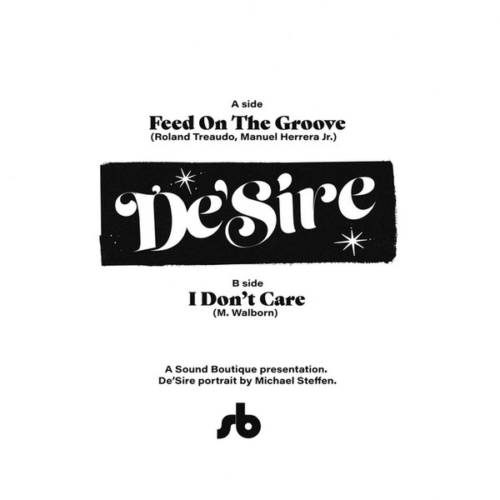
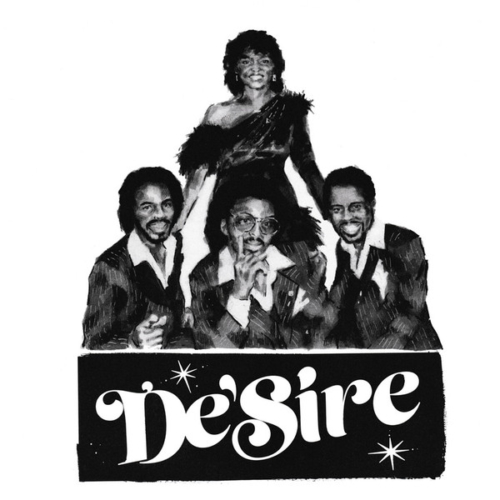 Killer boogie cuts from 1984 reissues! Double sider... 300 limited, grab it..
Killer boogie cuts from 1984 reissues! Double sider... 300 limited, grab it.. -
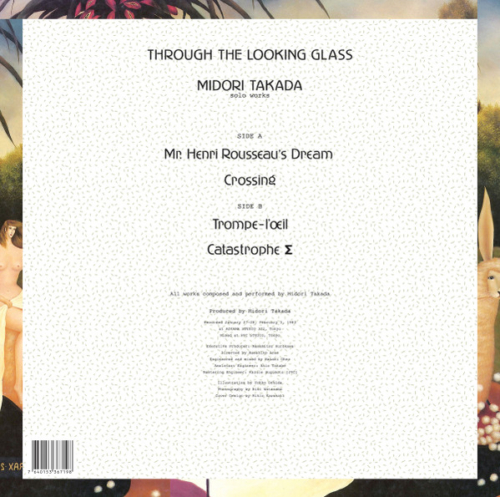
 Highly-anticipated reissue of Japanese percussionist Midori Takada's sought after and timeless ambient / minimal album "Through The Looking Glass", originally released in 1983 by RCA Japan. Considered a Holy Grail of Japanese music by many.. Beautiful 1 LP 33rpm Cut Re-Edition (2017) with 'Tip On' Sleeve - housed in heavy cardboard old Stoughton tip-on jacket - cut directly from the original studio reels at the Frankfurter SST Studio 'Through The Looking Glass' is Midori Takada's first solo endeavor, a captivating four-song suite capturing her deep quests into traditional African and Asian percussive language and exploring contemplative ambient sounds with an admirably precise use of marimba. The result is alternatively ethereal and vibrant, always precise and mesmerizing, and makes for an atmospheric masterpiece and an unparalleled sonic and spiritual experience. Midori Takada is a composer, multi percussionist, and theater artist renowned in Japanese vanguard circles. Midori released two solo albums: 'Through The Looking Glass' and 'Tree Of Life' and wrote music for Tadashi Suzuki's theater plays. Her hypnotic, minimalist music is based in the concept of coherence between sound and the human body.
Highly-anticipated reissue of Japanese percussionist Midori Takada's sought after and timeless ambient / minimal album "Through The Looking Glass", originally released in 1983 by RCA Japan. Considered a Holy Grail of Japanese music by many.. Beautiful 1 LP 33rpm Cut Re-Edition (2017) with 'Tip On' Sleeve - housed in heavy cardboard old Stoughton tip-on jacket - cut directly from the original studio reels at the Frankfurter SST Studio 'Through The Looking Glass' is Midori Takada's first solo endeavor, a captivating four-song suite capturing her deep quests into traditional African and Asian percussive language and exploring contemplative ambient sounds with an admirably precise use of marimba. The result is alternatively ethereal and vibrant, always precise and mesmerizing, and makes for an atmospheric masterpiece and an unparalleled sonic and spiritual experience. Midori Takada is a composer, multi percussionist, and theater artist renowned in Japanese vanguard circles. Midori released two solo albums: 'Through The Looking Glass' and 'Tree Of Life' and wrote music for Tadashi Suzuki's theater plays. Her hypnotic, minimalist music is based in the concept of coherence between sound and the human body. -
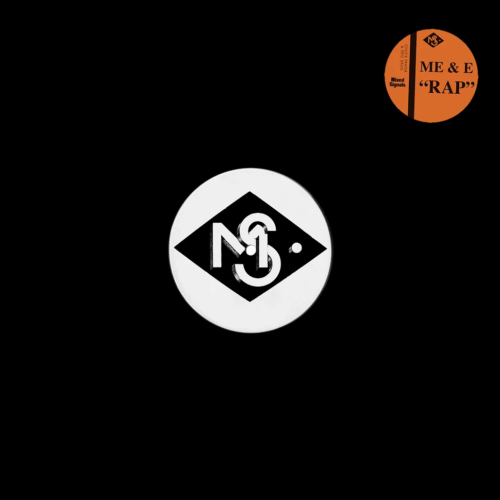 Visionary “Rap” EP by precocious 18-year-old duo Eric Davis (elv) and Chuck Prater (Chuk Chu) from 1989. Imagine if Schoolly D had joined Native Tongues and made an early hiphouse EP produced by Larry Heard. The story of Me & E took shape in Avalon Park in South Chicago, a vibrant, diverse, and politically active community with a rich musical culture. This was the fertile playground for producer Eric Davis (elv) and lyricist Chuck Prater (Chuk Chu). The park itself was adjacent to Eric’s backyard and they would hop the fence to listen to music, drink beers, and freestyle, even in the middle of the notoriously cold Chicago winters. Eric’s dad, Arlington Davis Jr., was a jazz drummer who played in the legendary spiritual jazz group The Awakening in the ‘70s. Jazz ran deep in their family with proud connections to Miles Davis. Arlington would host weekly jam sessions at his home, and Chuck & Eric were in regular attendance. On those evenings, Eric and his brothers were able to take turns on the sticks alongside the veteran players, honing their fledgling chops. These experiences gave them the confidence to take music seriously, and start a group. Channeling his drumming skills through an array of synths and drum machines, Eric produced tracks in his bedroom, inspired by artists like The Art Of Noise, Kraftwerk, and New Order. Combining their atmospheric electronic elements with his jazz background, and beat-making skills, he created a distinct sound that still sounds fresh today. Chuck was listening to Hendrix, Joplin, Public Enemy, MC Lyte, and Big Daddy Kane and developed a unique and uplifting lyrical flow. They met up after school almost every day to make music, and quickly produced the four songs that make up their Rap EP. The music duo never lost touch, and continued to produce throughout the 90’s, forming Rich Boys, another rap group with their crew from Avalon Park. In 1995, Chuk Chu released a solo album, Memoirs of a Blue Light Special, focussing on a more sample based production style. Eric inspired by the house scene in Chicago, produced some ethereal and otherworldly electronic music, which Mixed Signals is compiling for future release. The Rap EP is just an introduction to the ongoing story of Me & E.
Visionary “Rap” EP by precocious 18-year-old duo Eric Davis (elv) and Chuck Prater (Chuk Chu) from 1989. Imagine if Schoolly D had joined Native Tongues and made an early hiphouse EP produced by Larry Heard. The story of Me & E took shape in Avalon Park in South Chicago, a vibrant, diverse, and politically active community with a rich musical culture. This was the fertile playground for producer Eric Davis (elv) and lyricist Chuck Prater (Chuk Chu). The park itself was adjacent to Eric’s backyard and they would hop the fence to listen to music, drink beers, and freestyle, even in the middle of the notoriously cold Chicago winters. Eric’s dad, Arlington Davis Jr., was a jazz drummer who played in the legendary spiritual jazz group The Awakening in the ‘70s. Jazz ran deep in their family with proud connections to Miles Davis. Arlington would host weekly jam sessions at his home, and Chuck & Eric were in regular attendance. On those evenings, Eric and his brothers were able to take turns on the sticks alongside the veteran players, honing their fledgling chops. These experiences gave them the confidence to take music seriously, and start a group. Channeling his drumming skills through an array of synths and drum machines, Eric produced tracks in his bedroom, inspired by artists like The Art Of Noise, Kraftwerk, and New Order. Combining their atmospheric electronic elements with his jazz background, and beat-making skills, he created a distinct sound that still sounds fresh today. Chuck was listening to Hendrix, Joplin, Public Enemy, MC Lyte, and Big Daddy Kane and developed a unique and uplifting lyrical flow. They met up after school almost every day to make music, and quickly produced the four songs that make up their Rap EP. The music duo never lost touch, and continued to produce throughout the 90’s, forming Rich Boys, another rap group with their crew from Avalon Park. In 1995, Chuk Chu released a solo album, Memoirs of a Blue Light Special, focussing on a more sample based production style. Eric inspired by the house scene in Chicago, produced some ethereal and otherworldly electronic music, which Mixed Signals is compiling for future release. The Rap EP is just an introduction to the ongoing story of Me & E. -
Ausverkauft
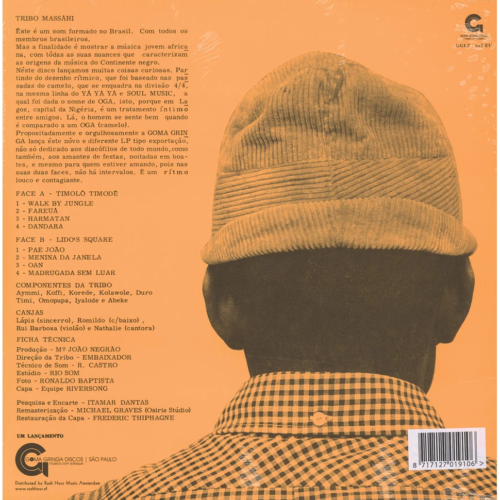
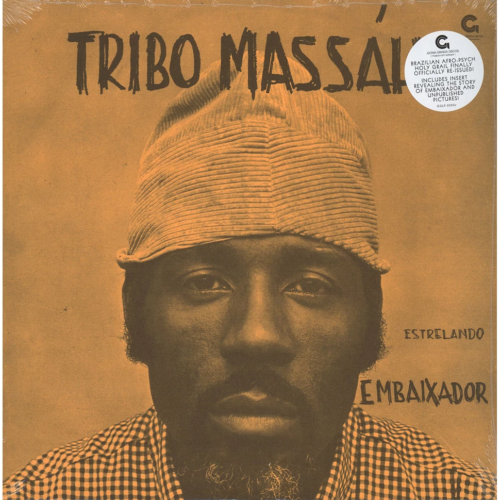 Originally released in 1972 in very limited numbers. A trip of an album rich in percussive energy and African chant - made in Brazil. The sounds of continents colliding in a young, funky & soul fuelled 70s. This is the european pressing!
Originally released in 1972 in very limited numbers. A trip of an album rich in percussive energy and African chant - made in Brazil. The sounds of continents colliding in a young, funky & soul fuelled 70s. This is the european pressing! -
Ausverkauft
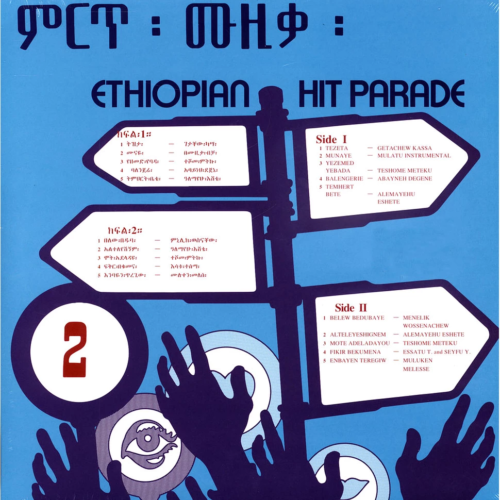
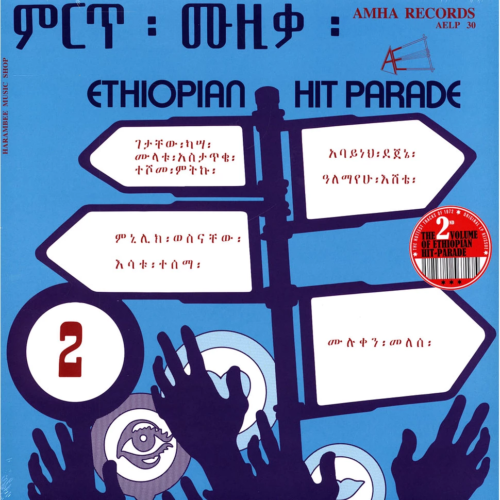 The follow up to the highly acclaimed reissue of the first volume, Ethiopian Hit Parade. The track layout is identical to the original record released in 1972. "After releasing around fifty 45 rpm singles and his first 33 rpm album (Ethiopian Modern Instrumental Hits AELP 10, re-released by Heavenly Sweetness HS092VL), Amha Esthèté set about compiling his best 45s on a series of now legendary albums (the originals are impossible to find) in 1972. The first four volumes of Ethiopian Hit Parade were released in September and October 1972, with the fifth volume appearing in January 1973. You are the proud owner of Volume 2. It is worth reminding ourselves that when Amha Esthèté set up his Amha Records label in 1968-69, it was in defiance of a state monopoly designed to regulate the imports and production of records by an imperial decree of July 1948. This extravagant state privilege had produced only 78s of traditional music , which though thrilling, excluded anything at all modern. To the best of our knowledge, only sixty-seven of these prehistoric discs were pressed in Great Britain between 1955 and 1961 and released by His Master’s Voice. They were supposed to be part of celebrations of Emperor Haile Selassie’s silver jubilee . . . even though 33s and 45s had existed since 1948 and 1949 respectively! Such incompetence and servility, combined with a rejection of an effervescent contemporary music scene, were symptomatic of the decadence surrounding the end of an era. An audacious, funky outlaw, a music lover and an entrepreneur in tune with the baby-boomer generation, young Amha Esthèté (he was only twenty-four when he launched his label) will be remembered as the instigator of a peaceful revolution thick with soul and rock’n’roll. After the acclaimed reissue of the first volume Ethiopian Hit Parade. Here is the second volume that include all the greatest Ethiopian Hits from 1972 to 1975. Identical reissue to the original vinyl which is extremely rare and expensive. The opening track of the compilation is the song Tezeta Slow and Fast by GETACHEW KASSA were featured on the album Ethiopiques, Vol. 10: Ethiopian Blues & Ballads. and originally released on 1972. The other tracks on this second volume celebrate such pioneers of modern Ethiopian groove as Abayneh Degene, Tèshomè Meteku, Menelik Wossenachew Mulatu Astatqe and Muluken Melesse, alongside “tradi-modern” singers representing Amhara and Oromo culture, so rich and so long marginalized."
The follow up to the highly acclaimed reissue of the first volume, Ethiopian Hit Parade. The track layout is identical to the original record released in 1972. "After releasing around fifty 45 rpm singles and his first 33 rpm album (Ethiopian Modern Instrumental Hits AELP 10, re-released by Heavenly Sweetness HS092VL), Amha Esthèté set about compiling his best 45s on a series of now legendary albums (the originals are impossible to find) in 1972. The first four volumes of Ethiopian Hit Parade were released in September and October 1972, with the fifth volume appearing in January 1973. You are the proud owner of Volume 2. It is worth reminding ourselves that when Amha Esthèté set up his Amha Records label in 1968-69, it was in defiance of a state monopoly designed to regulate the imports and production of records by an imperial decree of July 1948. This extravagant state privilege had produced only 78s of traditional music , which though thrilling, excluded anything at all modern. To the best of our knowledge, only sixty-seven of these prehistoric discs were pressed in Great Britain between 1955 and 1961 and released by His Master’s Voice. They were supposed to be part of celebrations of Emperor Haile Selassie’s silver jubilee . . . even though 33s and 45s had existed since 1948 and 1949 respectively! Such incompetence and servility, combined with a rejection of an effervescent contemporary music scene, were symptomatic of the decadence surrounding the end of an era. An audacious, funky outlaw, a music lover and an entrepreneur in tune with the baby-boomer generation, young Amha Esthèté (he was only twenty-four when he launched his label) will be remembered as the instigator of a peaceful revolution thick with soul and rock’n’roll. After the acclaimed reissue of the first volume Ethiopian Hit Parade. Here is the second volume that include all the greatest Ethiopian Hits from 1972 to 1975. Identical reissue to the original vinyl which is extremely rare and expensive. The opening track of the compilation is the song Tezeta Slow and Fast by GETACHEW KASSA were featured on the album Ethiopiques, Vol. 10: Ethiopian Blues & Ballads. and originally released on 1972. The other tracks on this second volume celebrate such pioneers of modern Ethiopian groove as Abayneh Degene, Tèshomè Meteku, Menelik Wossenachew Mulatu Astatqe and Muluken Melesse, alongside “tradi-modern” singers representing Amhara and Oromo culture, so rich and so long marginalized." -
Ausverkauft

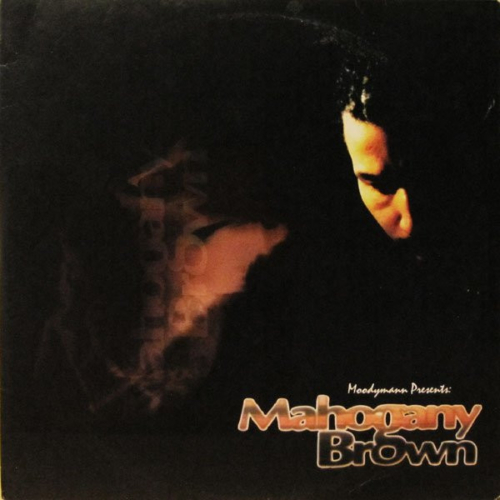 Repressed!His second album with, his first was on Planet E, with 9 deep, trademark Moodymann house tracks. Tip!
Repressed!His second album with, his first was on Planet E, with 9 deep, trademark Moodymann house tracks. Tip! -
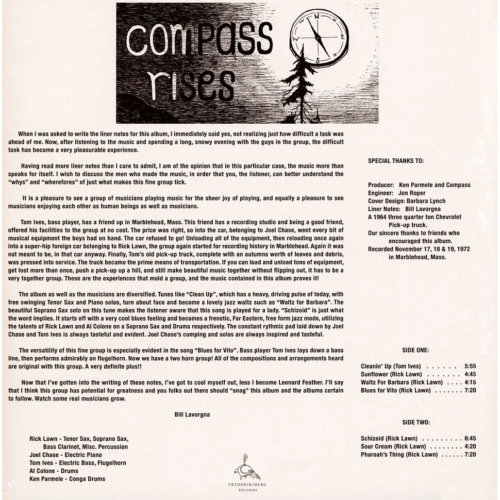
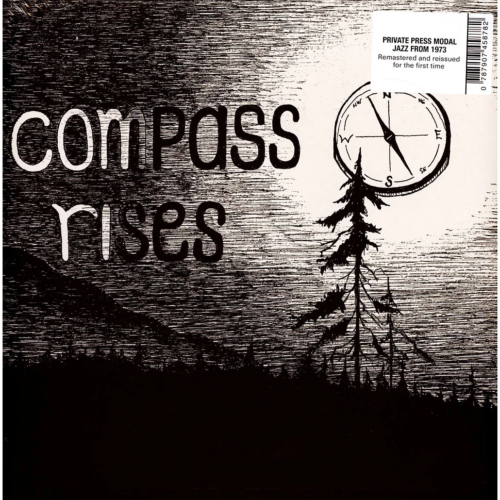 When arists self-releases their own recordings, they do so in the hopes that a hit might develop, or even better, a sphere of influence might form. In a lot of cases these records provide a stamp of existence and intent – a sonic business card showing what musicians were made of. Compass Rises (1973), the privately pressed sole LP by Oneonta, New York’s Compass, is both a sampling of versatility and a declaration of straight-ahead purpose. Regularly active in upstate New York between 1969 and 1974, Compass was an acoustic-electric quartet that played original music and modern jazz standards. The group consisted of saxophonist and bass clarinetist Rick Lawn, keyboardist Joel Chase, bassist Tom Ives (doubling on flugelhorn), and drummer Al Colone. On the LP, percussion duties were shared across the band as well as an conguero, Ken Parmele. Every song on Compass Rises, with the exception of the opener, is written and arranged by Lawn. The album is a nod to the post-Coltrane lineage of 1970’s jazz – even at its most spry there’s an undertow of workmanlike toughness, perhaps a reflection of the industrial-collegiate hybrid towns in New York where Compass plied their trade. Ives’ “Cleanin’ Up” starts the proceedings, a modal groover that would not have sounded out of place on a Joe Henderson Milestone LP, coupled with a neat, funky turnaround in the head. “Sunflower” has a slight Latin flavor and while it’s not exactly Freddie Hubbard’s “Little Sunflower,” it does have a lilt that’s both sinewy and breezy, with Lawn’s huskily burnished tenor shimmying atop. Following the ballad “Waltz for Barbara,” a front line expanded with Ives’ flugelhorn opens up on the driving “Blues for Vito,” dry and cracking rhythm supporting a tough, metallic dance. Side two begins with “Schizoid,” the nasally incision of Lawn’s soprano saxophone in spiraling turns against pummeling toms and Chase’s fuzzed-out intervallic sprawl. “Sour Cream” is a choppy bit of soul jazz, while the closing “Pharoah’s Thing” starts off on an elegiac plateau before unfurling with a piquant, minor-key bounce. With its stark, somewhat gothic cover art and toothy, inspired playing and composing, Compass Rises deserves the critical examination that it likely didn’t have upon release.
When arists self-releases their own recordings, they do so in the hopes that a hit might develop, or even better, a sphere of influence might form. In a lot of cases these records provide a stamp of existence and intent – a sonic business card showing what musicians were made of. Compass Rises (1973), the privately pressed sole LP by Oneonta, New York’s Compass, is both a sampling of versatility and a declaration of straight-ahead purpose. Regularly active in upstate New York between 1969 and 1974, Compass was an acoustic-electric quartet that played original music and modern jazz standards. The group consisted of saxophonist and bass clarinetist Rick Lawn, keyboardist Joel Chase, bassist Tom Ives (doubling on flugelhorn), and drummer Al Colone. On the LP, percussion duties were shared across the band as well as an conguero, Ken Parmele. Every song on Compass Rises, with the exception of the opener, is written and arranged by Lawn. The album is a nod to the post-Coltrane lineage of 1970’s jazz – even at its most spry there’s an undertow of workmanlike toughness, perhaps a reflection of the industrial-collegiate hybrid towns in New York where Compass plied their trade. Ives’ “Cleanin’ Up” starts the proceedings, a modal groover that would not have sounded out of place on a Joe Henderson Milestone LP, coupled with a neat, funky turnaround in the head. “Sunflower” has a slight Latin flavor and while it’s not exactly Freddie Hubbard’s “Little Sunflower,” it does have a lilt that’s both sinewy and breezy, with Lawn’s huskily burnished tenor shimmying atop. Following the ballad “Waltz for Barbara,” a front line expanded with Ives’ flugelhorn opens up on the driving “Blues for Vito,” dry and cracking rhythm supporting a tough, metallic dance. Side two begins with “Schizoid,” the nasally incision of Lawn’s soprano saxophone in spiraling turns against pummeling toms and Chase’s fuzzed-out intervallic sprawl. “Sour Cream” is a choppy bit of soul jazz, while the closing “Pharoah’s Thing” starts off on an elegiac plateau before unfurling with a piquant, minor-key bounce. With its stark, somewhat gothic cover art and toothy, inspired playing and composing, Compass Rises deserves the critical examination that it likely didn’t have upon release. -
 Growing Bin switches back into reissue mode with an off-kilter obscurity from Austrian eccentrics Molto Brutto. Equal parts amateur funk, indie jangle, art rock and idiot pop, “2″ is a real weird bastard with a whole lot of charm. As the Bin continues to grow in all directions, there’s plenty of space for new sounds to take root. Alongside patches of Ambient, Balearic, Kosmische and Jazz, Hamburg’s audio allotment now stretches to accommodate the strange waves of Molto Brutto. Basso dug their first LP a decade back in Stuttgart’s Second Hand Records, embracing their abrasive style of sandpaper sonics and experimental urges. Interest piqued, he made the journey through their DIY catalogue, capturing excellent collaborations under the Ganslinger alias before bumping into the second of their two LPs. Originally released on their Golfdish imprint in 1988, “2″ walks into the pub with an air of accessibility, but quickly unravels into glorious chaos - pissing in the corner and passing out on the bar. Pop structures are suggested then subverted. Pints of Paisley slosh out of a broken Glass, tape loops spool onto shabby Material, and indie janglers are just a couple of stamps short of a Postcard. Turning you tipsy, this loveable rogue starts to tell you his life story, but you’re going to have to fill in some blanks. They miss ‘Blackie’, but who is he - a dog? What happened on the ‘Deadly Vacation’? Is that song really about a ‘Goldfish’, or did they find out the name of America’s horse? Words repeat until they lose all meaning, awkward poetry masks a lost laureate and a drunken Wurlitzer sends the room into a spin. The pubs are shut, so get happy drunk with Molto Brutto.
Growing Bin switches back into reissue mode with an off-kilter obscurity from Austrian eccentrics Molto Brutto. Equal parts amateur funk, indie jangle, art rock and idiot pop, “2″ is a real weird bastard with a whole lot of charm. As the Bin continues to grow in all directions, there’s plenty of space for new sounds to take root. Alongside patches of Ambient, Balearic, Kosmische and Jazz, Hamburg’s audio allotment now stretches to accommodate the strange waves of Molto Brutto. Basso dug their first LP a decade back in Stuttgart’s Second Hand Records, embracing their abrasive style of sandpaper sonics and experimental urges. Interest piqued, he made the journey through their DIY catalogue, capturing excellent collaborations under the Ganslinger alias before bumping into the second of their two LPs. Originally released on their Golfdish imprint in 1988, “2″ walks into the pub with an air of accessibility, but quickly unravels into glorious chaos - pissing in the corner and passing out on the bar. Pop structures are suggested then subverted. Pints of Paisley slosh out of a broken Glass, tape loops spool onto shabby Material, and indie janglers are just a couple of stamps short of a Postcard. Turning you tipsy, this loveable rogue starts to tell you his life story, but you’re going to have to fill in some blanks. They miss ‘Blackie’, but who is he - a dog? What happened on the ‘Deadly Vacation’? Is that song really about a ‘Goldfish’, or did they find out the name of America’s horse? Words repeat until they lose all meaning, awkward poetry masks a lost laureate and a drunken Wurlitzer sends the room into a spin. The pubs are shut, so get happy drunk with Molto Brutto. -

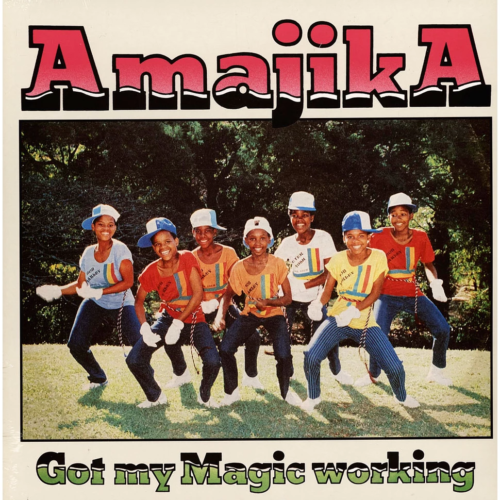 Heavy South African cut, unearthed by Dene from LCT, All about the massive title track ''Got My Magic Working''... Phat bassline, machinegun claps dipped in acid! The origins of Amajika is a tale of two worlds colliding at the perfect moment and begin in KwaMushu Township outside Durban. Here would be where a young Tu Nokwe would set up a school to help teach other aspiring youngsters like herself in music, dance and acting. This would become known as the Amajika Youth and Children’s Art Project and would be run from the Nokwe home, a common hangout for artists at the time. Some boast 2000+ pupils going through this program while others claim it wasn’t more than a backyard dance group, but for the lucky group of kids that were members in the mid 80s it would be their chance at stardom. It was during these years that a young aspiring playwright and musician Mbongeni Ngema had come across Tu and her group of gifted youngsters at the Nokwe family home. Although he was touring extensively at the time with the plays Woza Albert and Asinamali, the latter which eventually ended up on broadway, he would spend any time off from the tour with Tu and her dance troop. After being inspired by the American group New Edition, Mbongeni envisioned Amajika as the South African answer and decided to bankroll a studio session. The session would take place in a private studio in Durban.The release of the first single would follow very shortly. The lead track, Tomati-So is a fun swinging groove over some basic programmed drums. The song is dedicated to Tu Nokwe sings of her unique style and kind heart. On his next tour Mbongeni would take the remaining masters with him to the US and had the track remixed. Although it never materialized in a release States side he did return with the remixed tape and release it in South Africa the following year. Much like Tomato So the song was an ode and would be dedicated to the man who was making all their dreams come true. Got My Magic Working sings of going overseas and being a star on Broadway and TV and the man who is making it all happen. All these true predictions are sung on top of a groovy acid bass by a clearly matured troop of artists. During these years of working with Amajika, Mbongeni became very impressed with the exceeding talent of one of the members and decided to cast her in his upcoming musical Sarafina. The other children also wanted to be a part of the Broadway show but not everyone would get a role. This would be the end of Amajika as the next years would be dedicated to creating success on the musical stage. The growing kids that formed Amajika became young adults and pursued their own careers after the fact. Tu Nokwe would leave the country to return years later as the wife of Shaka Zulu on the big screen. To this day she is still very active both on stage and screen while Mbongeni is still writing and adding to the South African Musical Theatre catalog. Fast forward 30 years from the original release to a smokey club where ESA hears Got My Magic Working played by Rush Hours Store’s own Bonnefooi. Instantly he inquires about the track from his homeland and feels it a perfect addition the repertoire of the Afro Synth band he is quietly cooking up. The band’s instrumental take ended up as the B side on a mysterious and limited white label released by Rush Hour in early 2020 but quickly sold out. Here you have compiled the two title tracks from original Amajika singles along with the instrumental version by ESA’s Afro Synth Band for The complete Amajika experience, past to present.
Heavy South African cut, unearthed by Dene from LCT, All about the massive title track ''Got My Magic Working''... Phat bassline, machinegun claps dipped in acid! The origins of Amajika is a tale of two worlds colliding at the perfect moment and begin in KwaMushu Township outside Durban. Here would be where a young Tu Nokwe would set up a school to help teach other aspiring youngsters like herself in music, dance and acting. This would become known as the Amajika Youth and Children’s Art Project and would be run from the Nokwe home, a common hangout for artists at the time. Some boast 2000+ pupils going through this program while others claim it wasn’t more than a backyard dance group, but for the lucky group of kids that were members in the mid 80s it would be their chance at stardom. It was during these years that a young aspiring playwright and musician Mbongeni Ngema had come across Tu and her group of gifted youngsters at the Nokwe family home. Although he was touring extensively at the time with the plays Woza Albert and Asinamali, the latter which eventually ended up on broadway, he would spend any time off from the tour with Tu and her dance troop. After being inspired by the American group New Edition, Mbongeni envisioned Amajika as the South African answer and decided to bankroll a studio session. The session would take place in a private studio in Durban.The release of the first single would follow very shortly. The lead track, Tomati-So is a fun swinging groove over some basic programmed drums. The song is dedicated to Tu Nokwe sings of her unique style and kind heart. On his next tour Mbongeni would take the remaining masters with him to the US and had the track remixed. Although it never materialized in a release States side he did return with the remixed tape and release it in South Africa the following year. Much like Tomato So the song was an ode and would be dedicated to the man who was making all their dreams come true. Got My Magic Working sings of going overseas and being a star on Broadway and TV and the man who is making it all happen. All these true predictions are sung on top of a groovy acid bass by a clearly matured troop of artists. During these years of working with Amajika, Mbongeni became very impressed with the exceeding talent of one of the members and decided to cast her in his upcoming musical Sarafina. The other children also wanted to be a part of the Broadway show but not everyone would get a role. This would be the end of Amajika as the next years would be dedicated to creating success on the musical stage. The growing kids that formed Amajika became young adults and pursued their own careers after the fact. Tu Nokwe would leave the country to return years later as the wife of Shaka Zulu on the big screen. To this day she is still very active both on stage and screen while Mbongeni is still writing and adding to the South African Musical Theatre catalog. Fast forward 30 years from the original release to a smokey club where ESA hears Got My Magic Working played by Rush Hours Store’s own Bonnefooi. Instantly he inquires about the track from his homeland and feels it a perfect addition the repertoire of the Afro Synth band he is quietly cooking up. The band’s instrumental take ended up as the B side on a mysterious and limited white label released by Rush Hour in early 2020 but quickly sold out. Here you have compiled the two title tracks from original Amajika singles along with the instrumental version by ESA’s Afro Synth Band for The complete Amajika experience, past to present. -
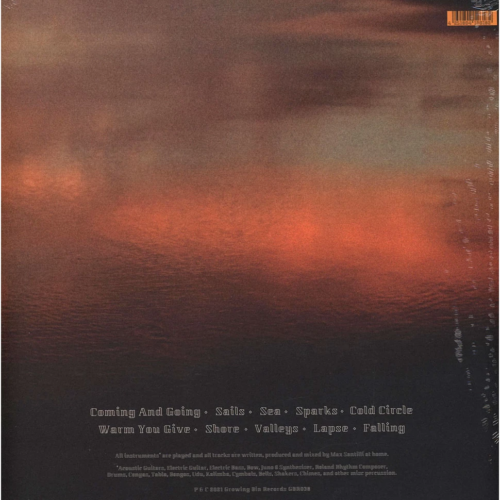
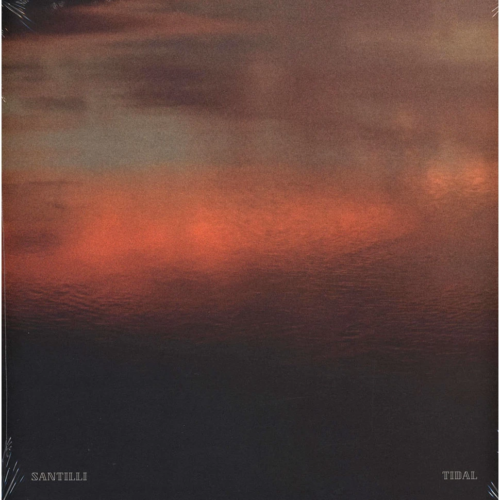 October 10, 2021 Keeping his carbon footprint at a minimum, Santilli sails from Sydney to Hamburg via ten textured vignettes delicately drawn with guitar, bass and organic percussion. Relaxing, reflective and endlessly beautiful, ‘Tidal’ explores elemental inspiration through a humanistic gaze. Whether you know Max Santilli through Ken Oath duo Angophora, previous releases ‘Surface’ and ‘In Circles’, or this is your first time making his acquaintance, you’ll agree he’s right at home on the Growing Bin. The multi-instrumentalist crafts exquisite acoustic music in tune with the finer moments of Windham Hill and ECM; a perfect fusion of talent, balance and the emotion shared by each release on the Hamburg label. As befits its inspiration ‘Tidal’ is an organic affair, related through bright acoustic guitar, hazy chimes and hand played percussion. Where the Australian draws you in with hypnotic repetition, the subtlety, warmth and tonal variation serve as a welcome reminder we’re living off grid. Though expert fretwork often takes centre stage, especially on the delicate B1 ‘Warm You Give’, it’s the blend of kalimba, woodblock, hand drums and shaker which truly transport the listener through open waters; a rhythmic breeze carrying us through the maritime drones and bowed squall. At times the salt air is spiced with cardamom and cloves (’Sea’) or lemongrass and galangal (’Valleys’), as we skirt the Indian Ocean or the Java Sea. ‘Lapse’ provides subtle hints of fourth world jazz as mallets take the lead, leaving the guitar to provide its own shimmering texture. Clear your mind, clear your schedule and make some time for ‘Tidal’, an opportunity to breathe in time with the planet.
October 10, 2021 Keeping his carbon footprint at a minimum, Santilli sails from Sydney to Hamburg via ten textured vignettes delicately drawn with guitar, bass and organic percussion. Relaxing, reflective and endlessly beautiful, ‘Tidal’ explores elemental inspiration through a humanistic gaze. Whether you know Max Santilli through Ken Oath duo Angophora, previous releases ‘Surface’ and ‘In Circles’, or this is your first time making his acquaintance, you’ll agree he’s right at home on the Growing Bin. The multi-instrumentalist crafts exquisite acoustic music in tune with the finer moments of Windham Hill and ECM; a perfect fusion of talent, balance and the emotion shared by each release on the Hamburg label. As befits its inspiration ‘Tidal’ is an organic affair, related through bright acoustic guitar, hazy chimes and hand played percussion. Where the Australian draws you in with hypnotic repetition, the subtlety, warmth and tonal variation serve as a welcome reminder we’re living off grid. Though expert fretwork often takes centre stage, especially on the delicate B1 ‘Warm You Give’, it’s the blend of kalimba, woodblock, hand drums and shaker which truly transport the listener through open waters; a rhythmic breeze carrying us through the maritime drones and bowed squall. At times the salt air is spiced with cardamom and cloves (’Sea’) or lemongrass and galangal (’Valleys’), as we skirt the Indian Ocean or the Java Sea. ‘Lapse’ provides subtle hints of fourth world jazz as mallets take the lead, leaving the guitar to provide its own shimmering texture. Clear your mind, clear your schedule and make some time for ‘Tidal’, an opportunity to breathe in time with the planet. -
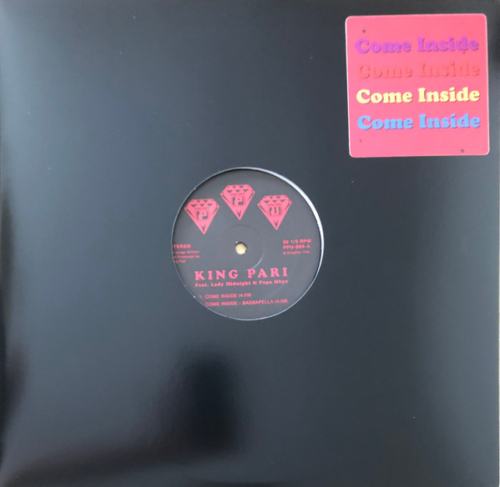 PPU Debut from King Pari. Recently relocating from Minneapolis to LA, King Pari are making bedroom songs with a heavy Minneapolis-sound mixed with chill West Coast stoner soul vibes. "Come Inside" was a fully remote collab. Joe creating the instrumental at his place, Cameron tracking vocals at his house, and Lady Midnight and Papa recording their features remotely. The song is a reaction to some people’s inability to make choices in their lives that consider the health, safety and humanity of others. Even family.
PPU Debut from King Pari. Recently relocating from Minneapolis to LA, King Pari are making bedroom songs with a heavy Minneapolis-sound mixed with chill West Coast stoner soul vibes. "Come Inside" was a fully remote collab. Joe creating the instrumental at his place, Cameron tracking vocals at his house, and Lady Midnight and Papa recording their features remotely. The song is a reaction to some people’s inability to make choices in their lives that consider the health, safety and humanity of others. Even family. -
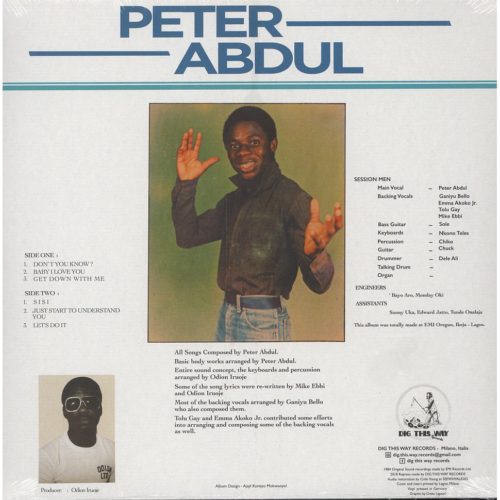
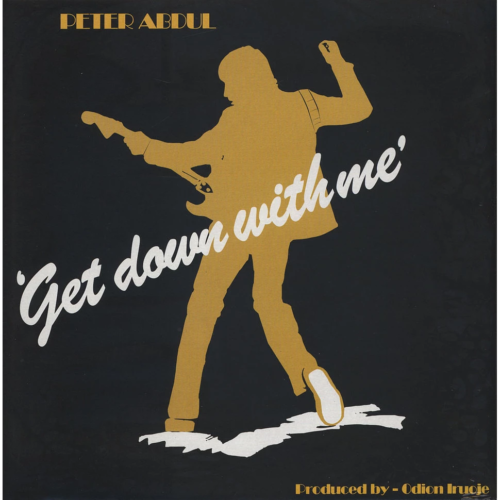 Dig this way records is proud to present its first official reissue: a marvelous Nigerian disco boogie album by Peter Abdul - Get Down With Me. Impossible to find on the original EMI press is now finally back into the market for everybody to enjoy it and make the hips move! Originally released in 1984 it’s an outstanding experimentation of Nigerian disco boogie - heavily influenced by western artists – played by talented musician that follows with their monster cosmic sounds the tiny and strong voice of Peter Abdul in his only officially released LP. The luck of this work came from the collaboration with Nkono Teles at keyboards ; Sole at bass guitar; Ganiyu Bello , Emmanuel Akoko Jr. and Tolu Gayas as backup vocalists – arranged and produced by Odion Iruoje and assisted by some good engineers like Bayo Aro, Monday Oki and Edward Jatto. All together they created this insane disco- boogie LP. For the 2018 reissue, the audio was carefully restored by Colin Young - Liner notes that come with a interview and some unseen and raw original pictures of Peter Abdul back in the days- these photos are printed separately on tick quality paper insert (from a small studio of Milano called Legno). As Peter Abdul said: “Music to me it's a pure natural instinct, a natural gift which i grew to love so much” - I was lucky and pleased to collaborate with great artists like Nkono Teles, a Cameroon born multi-instrumentalist and producer based in Nigeria; Ganiyu Bello, who came for a visit from London and joined me as a backup vocalist along with Emmanuel Akoko Jr.; and Tolu Gay – the woman vocalist and romantic flavor on “Baby I Love You”. Some great musicians played on the tracks, interested in making music with a talented teenager with a tiny voice – but one that sang to the beat and with a good sense of tonality. It was like a great adventure, and from that symbiosis, “Get Down With Me” was born. And fun: people started calling me the Michael Jackson of Nigeria at live shows, especially at the University of Ibadan, the Alfa Club and others. So many pretty girls wanting to win my heart.
Dig this way records is proud to present its first official reissue: a marvelous Nigerian disco boogie album by Peter Abdul - Get Down With Me. Impossible to find on the original EMI press is now finally back into the market for everybody to enjoy it and make the hips move! Originally released in 1984 it’s an outstanding experimentation of Nigerian disco boogie - heavily influenced by western artists – played by talented musician that follows with their monster cosmic sounds the tiny and strong voice of Peter Abdul in his only officially released LP. The luck of this work came from the collaboration with Nkono Teles at keyboards ; Sole at bass guitar; Ganiyu Bello , Emmanuel Akoko Jr. and Tolu Gayas as backup vocalists – arranged and produced by Odion Iruoje and assisted by some good engineers like Bayo Aro, Monday Oki and Edward Jatto. All together they created this insane disco- boogie LP. For the 2018 reissue, the audio was carefully restored by Colin Young - Liner notes that come with a interview and some unseen and raw original pictures of Peter Abdul back in the days- these photos are printed separately on tick quality paper insert (from a small studio of Milano called Legno). As Peter Abdul said: “Music to me it's a pure natural instinct, a natural gift which i grew to love so much” - I was lucky and pleased to collaborate with great artists like Nkono Teles, a Cameroon born multi-instrumentalist and producer based in Nigeria; Ganiyu Bello, who came for a visit from London and joined me as a backup vocalist along with Emmanuel Akoko Jr.; and Tolu Gay – the woman vocalist and romantic flavor on “Baby I Love You”. Some great musicians played on the tracks, interested in making music with a talented teenager with a tiny voice – but one that sang to the beat and with a good sense of tonality. It was like a great adventure, and from that symbiosis, “Get Down With Me” was born. And fun: people started calling me the Michael Jackson of Nigeria at live shows, especially at the University of Ibadan, the Alfa Club and others. So many pretty girls wanting to win my heart. -
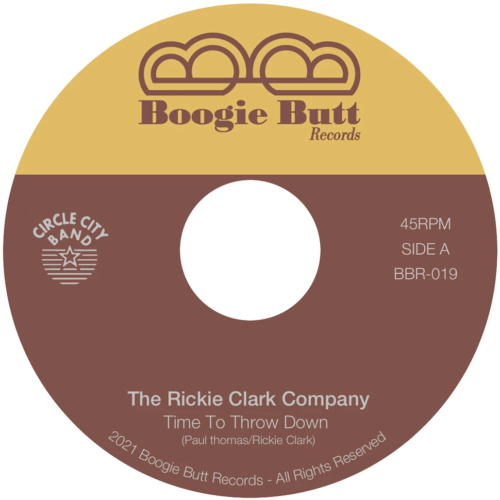 Boogie Butt Records presents its new reissue. Originally Released in 1983 on Becket Records, Time To Throw Down, is a party banger, between P.Funk & Boogie, created by the one & only Paul Thomas, founder of the "Magic Crew", The Circle City Band. Bandleader Paul Thomas had produced three 12" single's released under the title Circle City Band in 1983-84, one of those records titled Magic became extremely popular in the mid1980's, but this record was supposed to be the 4th 12inch single on Becket Records. At the same time in 1983, when Reggie Griffin and Paul Thomas was mixing this instrumental track in L.A, the reverend "Rickie Clark" originally from "Circle City" in Indianapolis, came to see them hearing what there was doing, and fall in love with this track, asking if he could used it for himself . The "Circle City Band" (ccb) is made up of eight remarkably talented souls. The band is lead and managed by founder, producer/musician/singer/songwriter Paul Thomas otherwise known as "P" aka the "Funky Skunk" and also features long time friends and mentors, including the legendary award-winning, multi-musician/songwriter/producer Reggie “Mr. Everything” Griffin of Tech-No-Funk fame.
Boogie Butt Records presents its new reissue. Originally Released in 1983 on Becket Records, Time To Throw Down, is a party banger, between P.Funk & Boogie, created by the one & only Paul Thomas, founder of the "Magic Crew", The Circle City Band. Bandleader Paul Thomas had produced three 12" single's released under the title Circle City Band in 1983-84, one of those records titled Magic became extremely popular in the mid1980's, but this record was supposed to be the 4th 12inch single on Becket Records. At the same time in 1983, when Reggie Griffin and Paul Thomas was mixing this instrumental track in L.A, the reverend "Rickie Clark" originally from "Circle City" in Indianapolis, came to see them hearing what there was doing, and fall in love with this track, asking if he could used it for himself . The "Circle City Band" (ccb) is made up of eight remarkably talented souls. The band is lead and managed by founder, producer/musician/singer/songwriter Paul Thomas otherwise known as "P" aka the "Funky Skunk" and also features long time friends and mentors, including the legendary award-winning, multi-musician/songwriter/producer Reggie “Mr. Everything” Griffin of Tech-No-Funk fame. -
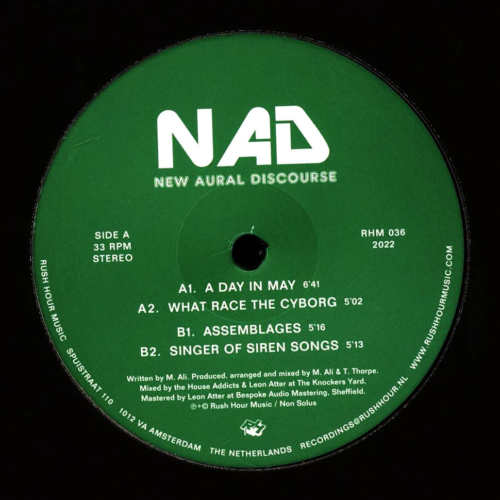
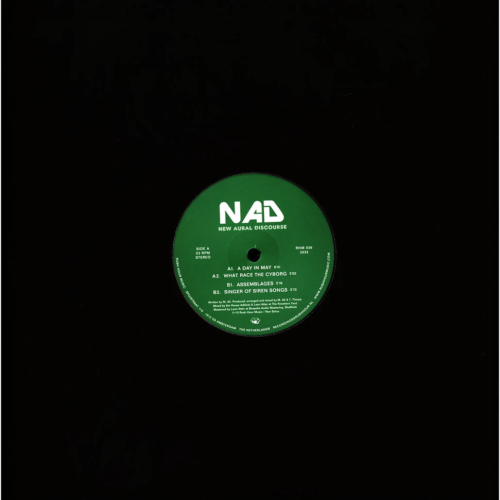 The legendary N.A.D. follows up the aptly titled ‘Electro EP’ with the punishing ‘A Day in May’, a scorching hot four track technofunk monster that marries the Detroit and Kalamazoo techno traditions with classic UK techno. Absolutely exceptional high-octane material destined to set any dancefloor on fire.
The legendary N.A.D. follows up the aptly titled ‘Electro EP’ with the punishing ‘A Day in May’, a scorching hot four track technofunk monster that marries the Detroit and Kalamazoo techno traditions with classic UK techno. Absolutely exceptional high-octane material destined to set any dancefloor on fire. -
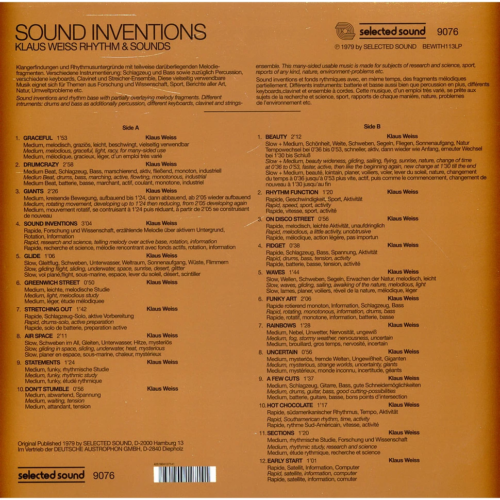
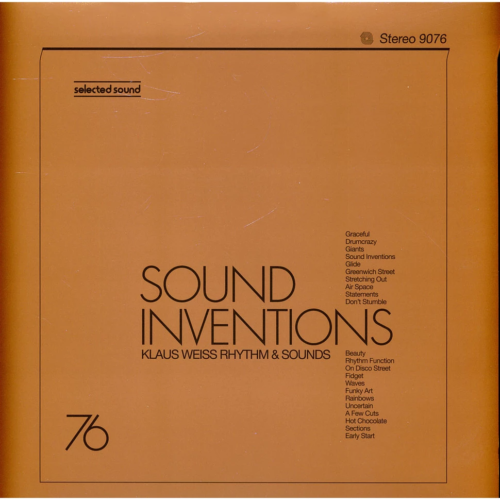 The second Be With foray into the archives of revered German library institution Selected Sound is one of our favourites, Sound Inventions from Klaus Weiss Rhythm And Sounds, originally released in 1979. From the notoriously strong mind of Niagara drummer / library-funk overlord Klaus Weiss, Sound Inventions is loaded with tripped out studio funk-freakery, mad samples and swaggering abstract funk grooves. From dramatic deep disco with dark Italo/Moroder leanings to heavy German funk breaks, this is absolutely sensational. Absolute synth-and-string-drenched magic. Born in 1942 in Gevelsberg, Germany, Klaus Weiss began his career as a jazz drummer at sixteen (with a group called the Jazzopators) before working with the internationally successful 60s groups the Klaus Doldinger Quartet and the Erwin Lehn Big Band. In 1965 he formed his own trio, the first of many groups to bear his name, and as his renown as a bandleader grew over the next decade it naturally lead to working in production music. About as cult as it gets when it comes to library music legends (German or otherwise), he produced essential records on German library labels Coloursound, Selected Sound and Sonoton.
The second Be With foray into the archives of revered German library institution Selected Sound is one of our favourites, Sound Inventions from Klaus Weiss Rhythm And Sounds, originally released in 1979. From the notoriously strong mind of Niagara drummer / library-funk overlord Klaus Weiss, Sound Inventions is loaded with tripped out studio funk-freakery, mad samples and swaggering abstract funk grooves. From dramatic deep disco with dark Italo/Moroder leanings to heavy German funk breaks, this is absolutely sensational. Absolute synth-and-string-drenched magic. Born in 1942 in Gevelsberg, Germany, Klaus Weiss began his career as a jazz drummer at sixteen (with a group called the Jazzopators) before working with the internationally successful 60s groups the Klaus Doldinger Quartet and the Erwin Lehn Big Band. In 1965 he formed his own trio, the first of many groups to bear his name, and as his renown as a bandleader grew over the next decade it naturally lead to working in production music. About as cult as it gets when it comes to library music legends (German or otherwise), he produced essential records on German library labels Coloursound, Selected Sound and Sonoton. -
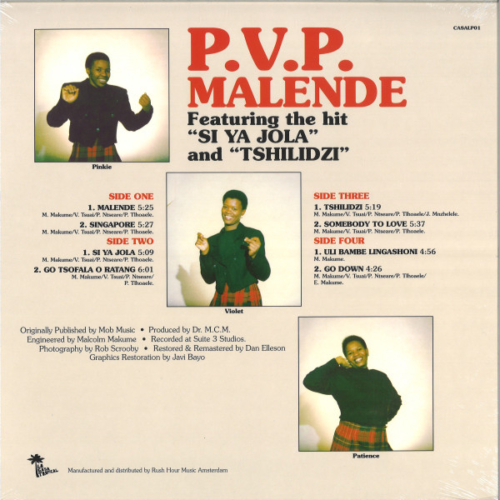
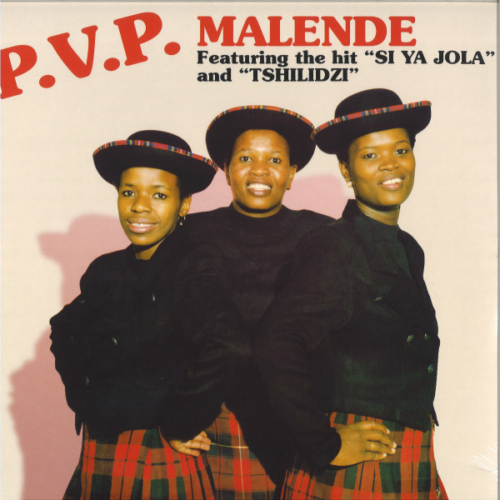 Following a two track 12" the whole fantastic album is remastered for a debut 2LP re-pressing. Patience, Violet ,and Pinky recorded their first Album in 1992. Knowing each other from the music scene, the back up singers turned friends teamed up with Emmanuel Diale and signed with Mob Music to embark on their music career as their own act. The first two albums were straight African Disco, A leftover sound of the 80's that some had still hoped to capitalize on. By the time they released their third album Why O Nketsa so Baby, loosely translated to "Why are you doing this to me Baby", Kwaito was still called either Disco or International House, and it was new sound that was taking over. The third album was influenced by the Shangaan sound made largely popular by artists like Penny Penny and Peta Teanet. Looking back now, at the time Mob Music was really leading the pack with this new sound. Being one of the last labels to have official releases with artwork and a group of young talented producers given full creative freedom they pushed the sound in a way only few other labels of that time can be given the same credit. For their fourth and final album on Mob Music they worked with legendary producer/songwriter Malcom "X" Makume. With three years of songwriting experience and stellar talent behind the desk the result was the LP Malende. Eight tracks that would combine the early kwaito sound with the more uptempo International House topped off with productions heavily inspired by what had been slowly making its way from Chicago over the last 10 years. At the time they had some success and to this day are well known amongst the real heads. The girls would go on to record one final album once their contract with Mob was up and then after a 5 album catalog would hang up their matching outfits for work a in a newly free South Africa. They remain friends to this day.
Following a two track 12" the whole fantastic album is remastered for a debut 2LP re-pressing. Patience, Violet ,and Pinky recorded their first Album in 1992. Knowing each other from the music scene, the back up singers turned friends teamed up with Emmanuel Diale and signed with Mob Music to embark on their music career as their own act. The first two albums were straight African Disco, A leftover sound of the 80's that some had still hoped to capitalize on. By the time they released their third album Why O Nketsa so Baby, loosely translated to "Why are you doing this to me Baby", Kwaito was still called either Disco or International House, and it was new sound that was taking over. The third album was influenced by the Shangaan sound made largely popular by artists like Penny Penny and Peta Teanet. Looking back now, at the time Mob Music was really leading the pack with this new sound. Being one of the last labels to have official releases with artwork and a group of young talented producers given full creative freedom they pushed the sound in a way only few other labels of that time can be given the same credit. For their fourth and final album on Mob Music they worked with legendary producer/songwriter Malcom "X" Makume. With three years of songwriting experience and stellar talent behind the desk the result was the LP Malende. Eight tracks that would combine the early kwaito sound with the more uptempo International House topped off with productions heavily inspired by what had been slowly making its way from Chicago over the last 10 years. At the time they had some success and to this day are well known amongst the real heads. The girls would go on to record one final album once their contract with Mob was up and then after a 5 album catalog would hang up their matching outfits for work a in a newly free South Africa. They remain friends to this day. -
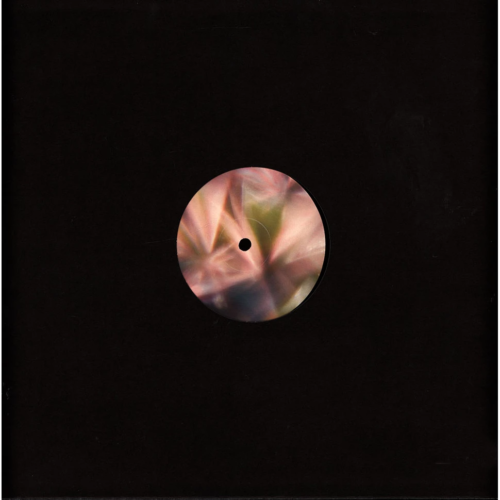
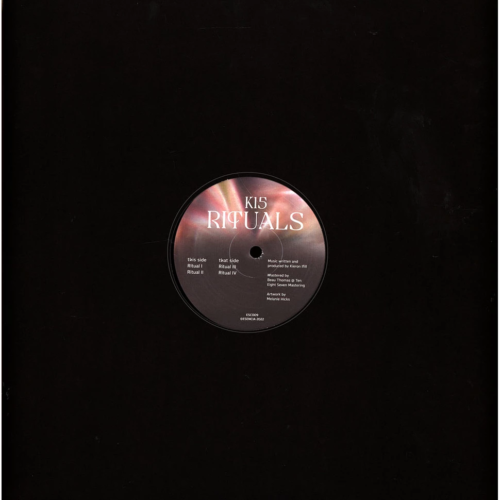 Esencia is proud to present Rituals, the new release from K15. Ritual I is a meditative piece, filled with flurries of white noise and arpeggiated tones. Ritual II is a dance floor number, filled with the melody and detail that centres all of K15’s music. Ritual III is grounded in bass, subtle melodies and skittish percussion, while Ritual IVserves as a palette cleanser - meditative and devotional in composition.
Esencia is proud to present Rituals, the new release from K15. Ritual I is a meditative piece, filled with flurries of white noise and arpeggiated tones. Ritual II is a dance floor number, filled with the melody and detail that centres all of K15’s music. Ritual III is grounded in bass, subtle melodies and skittish percussion, while Ritual IVserves as a palette cleanser - meditative and devotional in composition. -

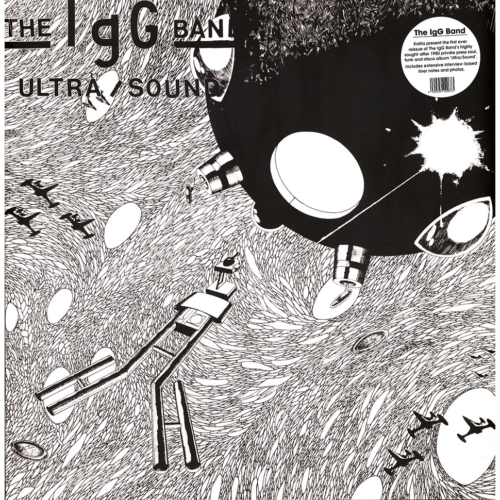 Kalita are excited to announce the first ever reissue of student medical group the IgG Band's highly sought-after 1980 soul, funk and disco grail 'Ultra/Sound'. Originally privately released in a small run on band member Clifford Becker's Infusion Records imprint, the album has since become a treasured prize of but a handful of die hard collectors and DJs as a result of both ist scarcity and quality. Now, in partnership with the band, Kalita shine a light on the album for the first time in over forty years, accompanied by never-before-seen archival photos and extensive interview-based liner notes.
Kalita are excited to announce the first ever reissue of student medical group the IgG Band's highly sought-after 1980 soul, funk and disco grail 'Ultra/Sound'. Originally privately released in a small run on band member Clifford Becker's Infusion Records imprint, the album has since become a treasured prize of but a handful of die hard collectors and DJs as a result of both ist scarcity and quality. Now, in partnership with the band, Kalita shine a light on the album for the first time in over forty years, accompanied by never-before-seen archival photos and extensive interview-based liner notes. -
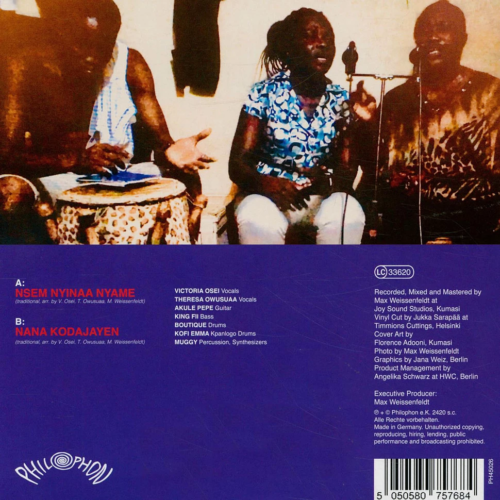
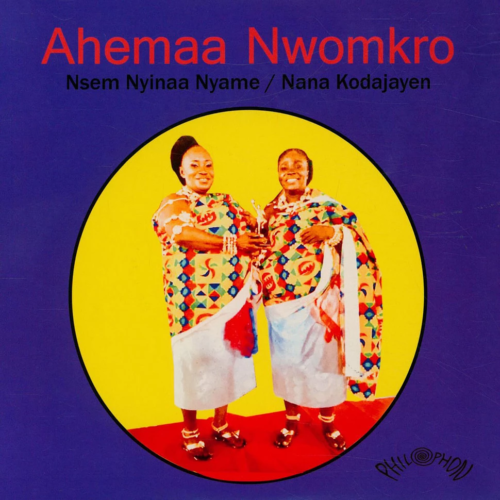 Ahemaa Nwomkro, which means queens of Nwomkro, are Victoria Osei and Theresa Owusuaa. Nwomkro is an old Ashanti musical style, which played an influential role in the origin of the typical more roots-like Highlife style of Kumasi, the cultural capital of Ghana in the middle of the jungle. On this release the two singers have teamed up with the young generation of Highlife muicians of Kumasi. On guitar is Akule Pepe, who served for years in the group of Highlife legend Alex Konadu, the most on demand band in its time. The two songs are a rare example of how good pure Nwomkro gets together with typical Highlife.
Ahemaa Nwomkro, which means queens of Nwomkro, are Victoria Osei and Theresa Owusuaa. Nwomkro is an old Ashanti musical style, which played an influential role in the origin of the typical more roots-like Highlife style of Kumasi, the cultural capital of Ghana in the middle of the jungle. On this release the two singers have teamed up with the young generation of Highlife muicians of Kumasi. On guitar is Akule Pepe, who served for years in the group of Highlife legend Alex Konadu, the most on demand band in its time. The two songs are a rare example of how good pure Nwomkro gets together with typical Highlife. -
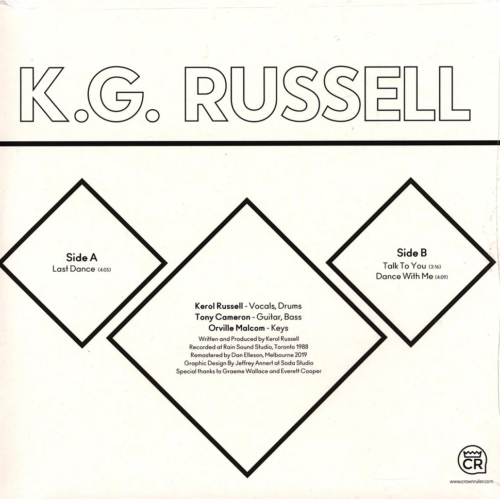
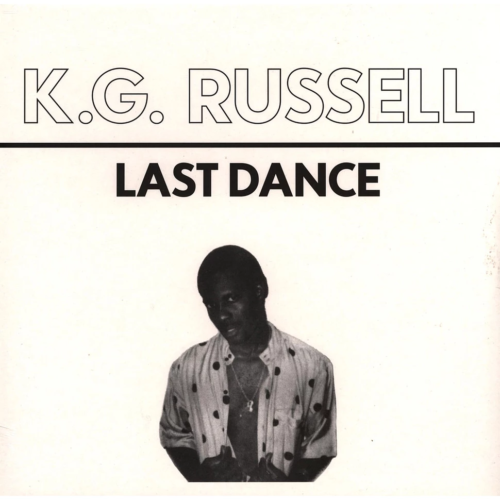 Jamaican born and Toronto raised, KG Russell is an unsung journeyman who followed the DIY path with his compelling output. Only a handful of collectors have been aware of the few releases via his private imprint Rain Sound - of which little information is known and copies very seldom seen. A striking stand-out of Russell’s work comes via his Dance With Me album - a self-produced jewel originally recorded in 1988 with help from friends Tony Cameron and Orville Malcom on session duties. The brilliant blender of synth-soaked soul was released in 1990 on cassette only. Roughly 200 copies were manufactured and personally handed out to local record stores around Toronto. Crown Ruler returns, plucking out three superior cuts for Last Dance and breathing new life into each via an impressive remastering effort from Melbourne sound wizard Daniel Elleson. Finally pressed to wax, this EP is clearly deservent of the 12” treatment. An island-tipped-electro-come-proto-house string of melters , guaranteed to prick the ears of lovers of the obscure and exotic. Last Dance is full of curious influences. It could be described as Caribbean flavored drum machine r’n’b. From the title track, a hypnotic boogie dancefloor filler, to Talk To Me, an electro rap meets smooth-jazz love jam, and finally Dance With Me, a bent and wasted soul ballad - Russell bares it all in another lost treasure given some TLC and re-purposed for today’s DJ leaning ear.
Jamaican born and Toronto raised, KG Russell is an unsung journeyman who followed the DIY path with his compelling output. Only a handful of collectors have been aware of the few releases via his private imprint Rain Sound - of which little information is known and copies very seldom seen. A striking stand-out of Russell’s work comes via his Dance With Me album - a self-produced jewel originally recorded in 1988 with help from friends Tony Cameron and Orville Malcom on session duties. The brilliant blender of synth-soaked soul was released in 1990 on cassette only. Roughly 200 copies were manufactured and personally handed out to local record stores around Toronto. Crown Ruler returns, plucking out three superior cuts for Last Dance and breathing new life into each via an impressive remastering effort from Melbourne sound wizard Daniel Elleson. Finally pressed to wax, this EP is clearly deservent of the 12” treatment. An island-tipped-electro-come-proto-house string of melters , guaranteed to prick the ears of lovers of the obscure and exotic. Last Dance is full of curious influences. It could be described as Caribbean flavored drum machine r’n’b. From the title track, a hypnotic boogie dancefloor filler, to Talk To Me, an electro rap meets smooth-jazz love jam, and finally Dance With Me, a bent and wasted soul ballad - Russell bares it all in another lost treasure given some TLC and re-purposed for today’s DJ leaning ear. -
Ausverkauft
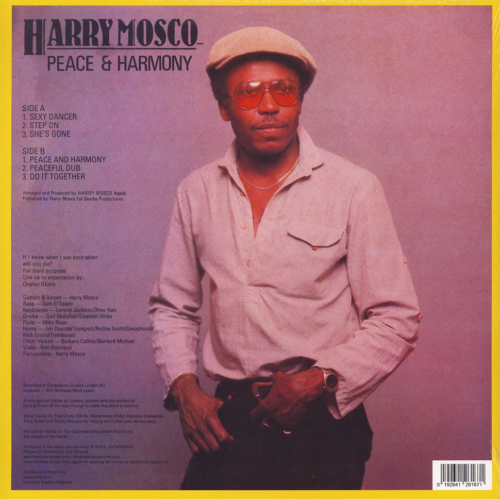
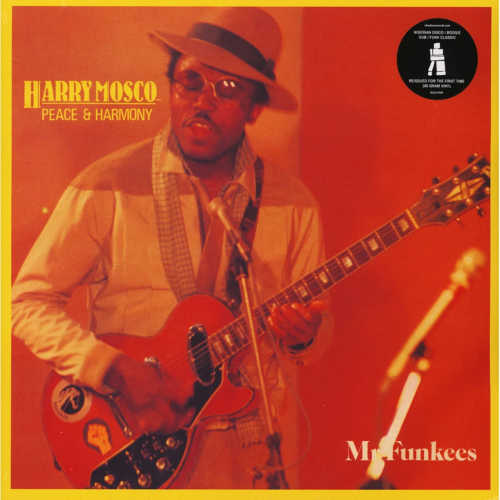 Official LP reissue of 'Peace & Harmony' by Nigerian funk royalty Harry Mosco, Originally released in 1979. Incl the big tracks ''Sexy Dancer'', ''Step On'' and ''Do It Together'' Isle Of Jura digs deep going back 40 years for the reissue of Harry's 1979 album which is something of an undiscovered gem that touches upon Disco, Funk, Boogie, Soul and Dub. Harry passed away in 2012 and we’ve worked closely with his son on the reissue. Harry Mosco is best known as the founder of legendary 1970s Nigerian Afro-Funk band The Funkees. Originating as an Army band after the Nigerian Civil War they lead the wave of upbeat music produced by young artists in Nigeria in response to the darkness of the recently concluded civil conflict. Following a notable hit single ‘Akula Owu Onyeara’ the band split in 1977 and Harry pursued a solo career. ‘Peace & Harmony’ was Harry’s third LP continuing the rich vein of form found in previous albums ‘Country Boy’ and ‘Funkees’ (For You Specially). He was a visionary who wrote, arranged and produced each song on the LP assisted by Mark Lusari on engineering duties (P.I.L, Jah Wobble & Prince I), whose Reggae and Dub influence can be felt on title track ‘Peace & Harmony’ and ‘Peaceful Dub’. The LP contains two certified floorfillers of Studio 54 era Disco Funk in the shape of ‘Sexy Dancer’ & ‘Step On’ and two slow jams, the soulful ballad ‘She’s Gone’ and horn lead album closer ‘Do It Together’. Mr Funkees was printed on the cover to help record buyers make the connection between Mosco and his former band.
Official LP reissue of 'Peace & Harmony' by Nigerian funk royalty Harry Mosco, Originally released in 1979. Incl the big tracks ''Sexy Dancer'', ''Step On'' and ''Do It Together'' Isle Of Jura digs deep going back 40 years for the reissue of Harry's 1979 album which is something of an undiscovered gem that touches upon Disco, Funk, Boogie, Soul and Dub. Harry passed away in 2012 and we’ve worked closely with his son on the reissue. Harry Mosco is best known as the founder of legendary 1970s Nigerian Afro-Funk band The Funkees. Originating as an Army band after the Nigerian Civil War they lead the wave of upbeat music produced by young artists in Nigeria in response to the darkness of the recently concluded civil conflict. Following a notable hit single ‘Akula Owu Onyeara’ the band split in 1977 and Harry pursued a solo career. ‘Peace & Harmony’ was Harry’s third LP continuing the rich vein of form found in previous albums ‘Country Boy’ and ‘Funkees’ (For You Specially). He was a visionary who wrote, arranged and produced each song on the LP assisted by Mark Lusari on engineering duties (P.I.L, Jah Wobble & Prince I), whose Reggae and Dub influence can be felt on title track ‘Peace & Harmony’ and ‘Peaceful Dub’. The LP contains two certified floorfillers of Studio 54 era Disco Funk in the shape of ‘Sexy Dancer’ & ‘Step On’ and two slow jams, the soulful ballad ‘She’s Gone’ and horn lead album closer ‘Do It Together’. Mr Funkees was printed on the cover to help record buyers make the connection between Mosco and his former band. -
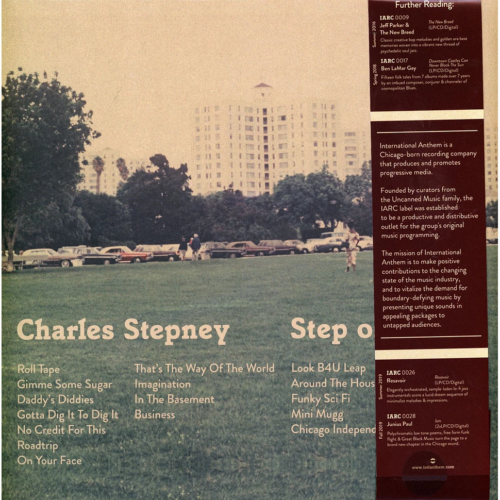
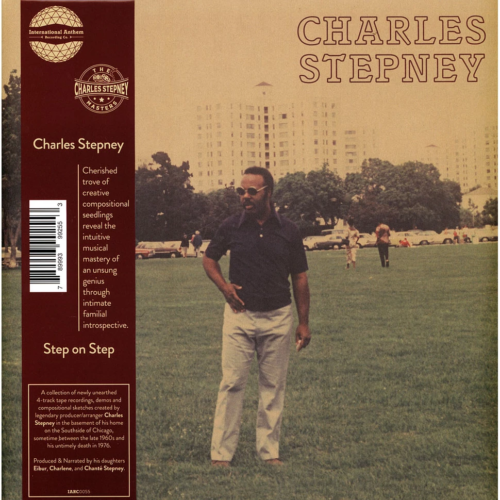 Chicago-born composer, producer and arranger Charles Stepney is known to some for his work with Earth, Wind & Fire, Deniece Williams, and Ramsey Lewis, or for his work with Chess Records in the 1960s, where he was an essential creative force behind seminal recordings by Rotary Connection, Minnie Riperton, Marlena Shaw, Muddy Waters, Howlin Wolf, Terry Callier, The Dells, The Emotions, and many many more. In the decades since his untimely death in 1976, the presence of his name in liner notes and on vinyl labels has become a seal of quality for record collectors, music historians, and aficionados, while his sound has been used by countless samplers in the hip-hop world including Kanye West, A Tribe Called Quest, The Fugees, MF Doom, and Madlib. But in comparison to the post-mortem renown of his sound, or the music he created and the artists he supported while he was alive, Stepney is a greatly under-appreciated figure... a genius relegated to the shadows.
Chicago-born composer, producer and arranger Charles Stepney is known to some for his work with Earth, Wind & Fire, Deniece Williams, and Ramsey Lewis, or for his work with Chess Records in the 1960s, where he was an essential creative force behind seminal recordings by Rotary Connection, Minnie Riperton, Marlena Shaw, Muddy Waters, Howlin Wolf, Terry Callier, The Dells, The Emotions, and many many more. In the decades since his untimely death in 1976, the presence of his name in liner notes and on vinyl labels has become a seal of quality for record collectors, music historians, and aficionados, while his sound has been used by countless samplers in the hip-hop world including Kanye West, A Tribe Called Quest, The Fugees, MF Doom, and Madlib. But in comparison to the post-mortem renown of his sound, or the music he created and the artists he supported while he was alive, Stepney is a greatly under-appreciated figure... a genius relegated to the shadows. -
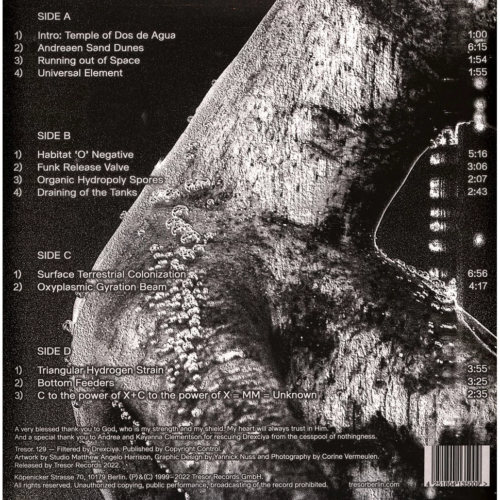
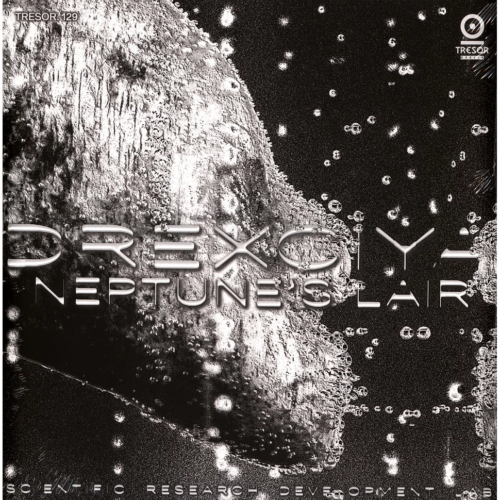 Tresor Records announces forthcoming special editions of its entire catalogue of Drexciya and related projects. 2022 marks the 20th anniversary of the passing of James Stinson and the releases of the Transllusion and Shifted Phases albums. In recognition, the rightsholders, their families, and the label have commissioned Detroit-based contemporary artist Matthew Angelo Harrison to re-conceptualize the covers of Tresor's Drexciya-related catalogue. These editions will be released sequentially, bimonthly, starting early-September 2022. The series starts with Neptune's Lair, first released in 1999, with the Hydro Doorways single arriving shortly after. In November, Harnessed The Storm and Digital Tsunami are coming. In 2023 comes the release of Transllusion in February. The series is completed by the long-awaited re-release of Shifted Phases - The Cosmic Memoirs Of The Late Great Rupert J. Rosinthrope - at the end of March. These records, individually and as a catalogue, represent some of the most crucial moments in the Tresor label history, with the sound and mythic world of Drexciya undoubtedly inspiring generations.
Tresor Records announces forthcoming special editions of its entire catalogue of Drexciya and related projects. 2022 marks the 20th anniversary of the passing of James Stinson and the releases of the Transllusion and Shifted Phases albums. In recognition, the rightsholders, their families, and the label have commissioned Detroit-based contemporary artist Matthew Angelo Harrison to re-conceptualize the covers of Tresor's Drexciya-related catalogue. These editions will be released sequentially, bimonthly, starting early-September 2022. The series starts with Neptune's Lair, first released in 1999, with the Hydro Doorways single arriving shortly after. In November, Harnessed The Storm and Digital Tsunami are coming. In 2023 comes the release of Transllusion in February. The series is completed by the long-awaited re-release of Shifted Phases - The Cosmic Memoirs Of The Late Great Rupert J. Rosinthrope - at the end of March. These records, individually and as a catalogue, represent some of the most crucial moments in the Tresor label history, with the sound and mythic world of Drexciya undoubtedly inspiring generations. -
Ausverkauft

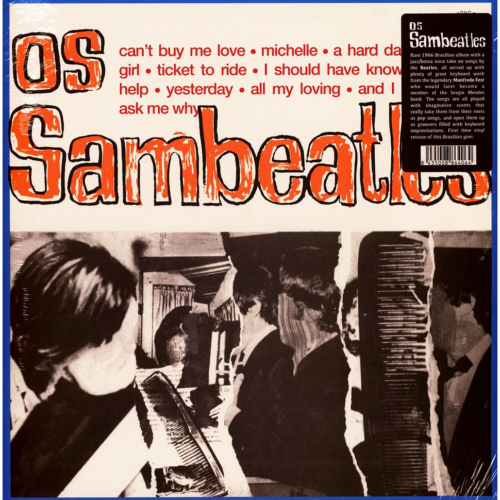 HIGHLIGHTS: Rare 1966 Brazilian album with a jazz/bossa nova take on songs by the Beatles, all served up with plenty of great keyboard work from the legendary Manfredo Fest who would later become member of the Sergio Mendes band.The songs are all played with imaginative scents that really take them from their roots as pop songs and open them up as groovers filled with keyboard improvisations.First time vinyl reissue. DESCRIPTION: Rare 1966 Brazilian LP with a jazz/bossa nova take on songs by the Beatles performed by the very talented Manfredo Fest and his trio. It was originally released right after their classic 1965 RGE album and has a very similar jazz-based sound. Manfredo Fest was part of the gathering of Brazilian musicians of the late-'50s who were developing the bossa nova movement, and he made a number of trio recordings in that vein from 1961 to 1966. After emigrating to Minneapolis in 1967, Fest moved to Los Angeles where he served as keyboardist and arranger for Bossa Rio and toured with Sergio Mendes.This recording is all instrumental, strongly jazz-based, with piano as the main solo instrument, soaring over the top of some tight, crackling rhythms! The songs are all played with imaginative scents that really take them from their roots as pop songs and open them up as groovers filled with keyboard improvisations.A nice slice of how the bossa nova sound was evolving in its homeland as well as the international impact the Beatles were having on countries outside of the U.S., England, Japan, and Germany. First time vinyl reissue.
HIGHLIGHTS: Rare 1966 Brazilian album with a jazz/bossa nova take on songs by the Beatles, all served up with plenty of great keyboard work from the legendary Manfredo Fest who would later become member of the Sergio Mendes band.The songs are all played with imaginative scents that really take them from their roots as pop songs and open them up as groovers filled with keyboard improvisations.First time vinyl reissue. DESCRIPTION: Rare 1966 Brazilian LP with a jazz/bossa nova take on songs by the Beatles performed by the very talented Manfredo Fest and his trio. It was originally released right after their classic 1965 RGE album and has a very similar jazz-based sound. Manfredo Fest was part of the gathering of Brazilian musicians of the late-'50s who were developing the bossa nova movement, and he made a number of trio recordings in that vein from 1961 to 1966. After emigrating to Minneapolis in 1967, Fest moved to Los Angeles where he served as keyboardist and arranger for Bossa Rio and toured with Sergio Mendes.This recording is all instrumental, strongly jazz-based, with piano as the main solo instrument, soaring over the top of some tight, crackling rhythms! The songs are all played with imaginative scents that really take them from their roots as pop songs and open them up as groovers filled with keyboard improvisations.A nice slice of how the bossa nova sound was evolving in its homeland as well as the international impact the Beatles were having on countries outside of the U.S., England, Japan, and Germany. First time vinyl reissue. -
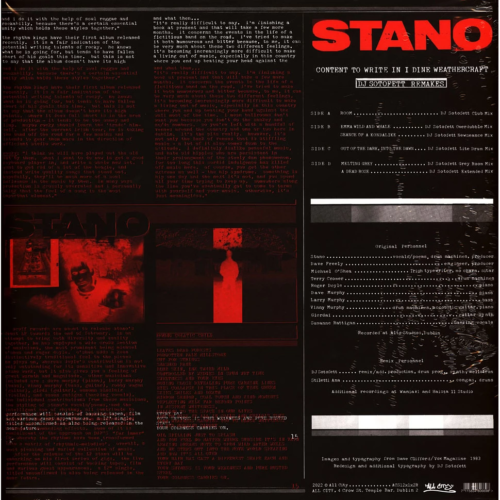
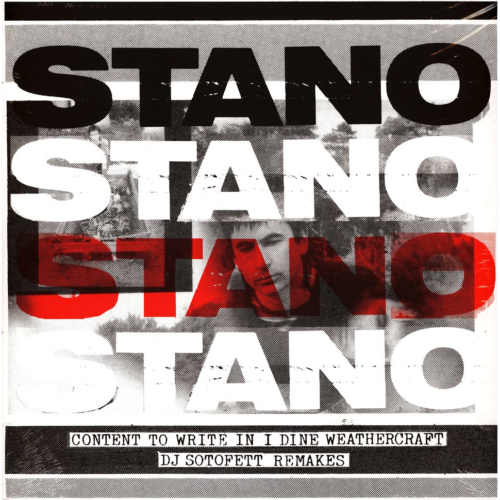 DJ Sotofett remakes of the debut LP (Content To Write In I Dine Weathercraft, 1983) from Irish post-punk producer Stano. A whole load of styles on this one. TIP! How this record came about has been lost a bit to the midst of (recent) time, back in 2018 when we repressed "Content to Write in I Dine Weathercraft" the 1983 debut LP of one of Ireland's more enigmatic musical characters - we slid it the way of the versatile Norwegian polymath who suggested a remix, which quickly became two and soon ended up a full suite. We put it aside for a bit, became a bit longer, then the artwork - pieced together by the Sex Tags boss himself cutting up features from Irish fanzine Vox - and the general lag of production in the post covid world and here we are the guts of 5 years later! A member of the legendary punk / post-punk group The Threat which disbanded after lead singer Maurice Foley disappeared to join the Hare Krishnas, Stano set up his outsider stall early on. The Threat had Stano on synths, one of the first female bassists in Deirdre Creed and their debut single was produced by progressive trad musician Donal Lunny of Planxty. His solo career of improvised electronic music continued in this vein of the unexpected – sitting outside both the country’s mainstream and alternative rock scenes. Eschewing both live performance and the spotlight for studio collaborations for this LP he worked with a number of Irish musicians - Roger Doyle, Daniel Figgis and of course Michael O Shea. This remix pack kicks off with the drum machine exotica funk of "Room" and runs the gamut of 80's pop experimentation via the new wave dream pop of "Emma Wild", dubbing out the haunted house vibes of "Seance of Klondalike", adding some menace to the gothic feel of "Melting Grey", stretching "Out of the Dark, Into the Dawn" into a skrangled baleric dubby house jam and closing it out adding a hypnotic repetitive punch to O'Shea's beautiful timeless playing on "A Dead Rose".
DJ Sotofett remakes of the debut LP (Content To Write In I Dine Weathercraft, 1983) from Irish post-punk producer Stano. A whole load of styles on this one. TIP! How this record came about has been lost a bit to the midst of (recent) time, back in 2018 when we repressed "Content to Write in I Dine Weathercraft" the 1983 debut LP of one of Ireland's more enigmatic musical characters - we slid it the way of the versatile Norwegian polymath who suggested a remix, which quickly became two and soon ended up a full suite. We put it aside for a bit, became a bit longer, then the artwork - pieced together by the Sex Tags boss himself cutting up features from Irish fanzine Vox - and the general lag of production in the post covid world and here we are the guts of 5 years later! A member of the legendary punk / post-punk group The Threat which disbanded after lead singer Maurice Foley disappeared to join the Hare Krishnas, Stano set up his outsider stall early on. The Threat had Stano on synths, one of the first female bassists in Deirdre Creed and their debut single was produced by progressive trad musician Donal Lunny of Planxty. His solo career of improvised electronic music continued in this vein of the unexpected – sitting outside both the country’s mainstream and alternative rock scenes. Eschewing both live performance and the spotlight for studio collaborations for this LP he worked with a number of Irish musicians - Roger Doyle, Daniel Figgis and of course Michael O Shea. This remix pack kicks off with the drum machine exotica funk of "Room" and runs the gamut of 80's pop experimentation via the new wave dream pop of "Emma Wild", dubbing out the haunted house vibes of "Seance of Klondalike", adding some menace to the gothic feel of "Melting Grey", stretching "Out of the Dark, Into the Dawn" into a skrangled baleric dubby house jam and closing it out adding a hypnotic repetitive punch to O'Shea's beautiful timeless playing on "A Dead Rose".
